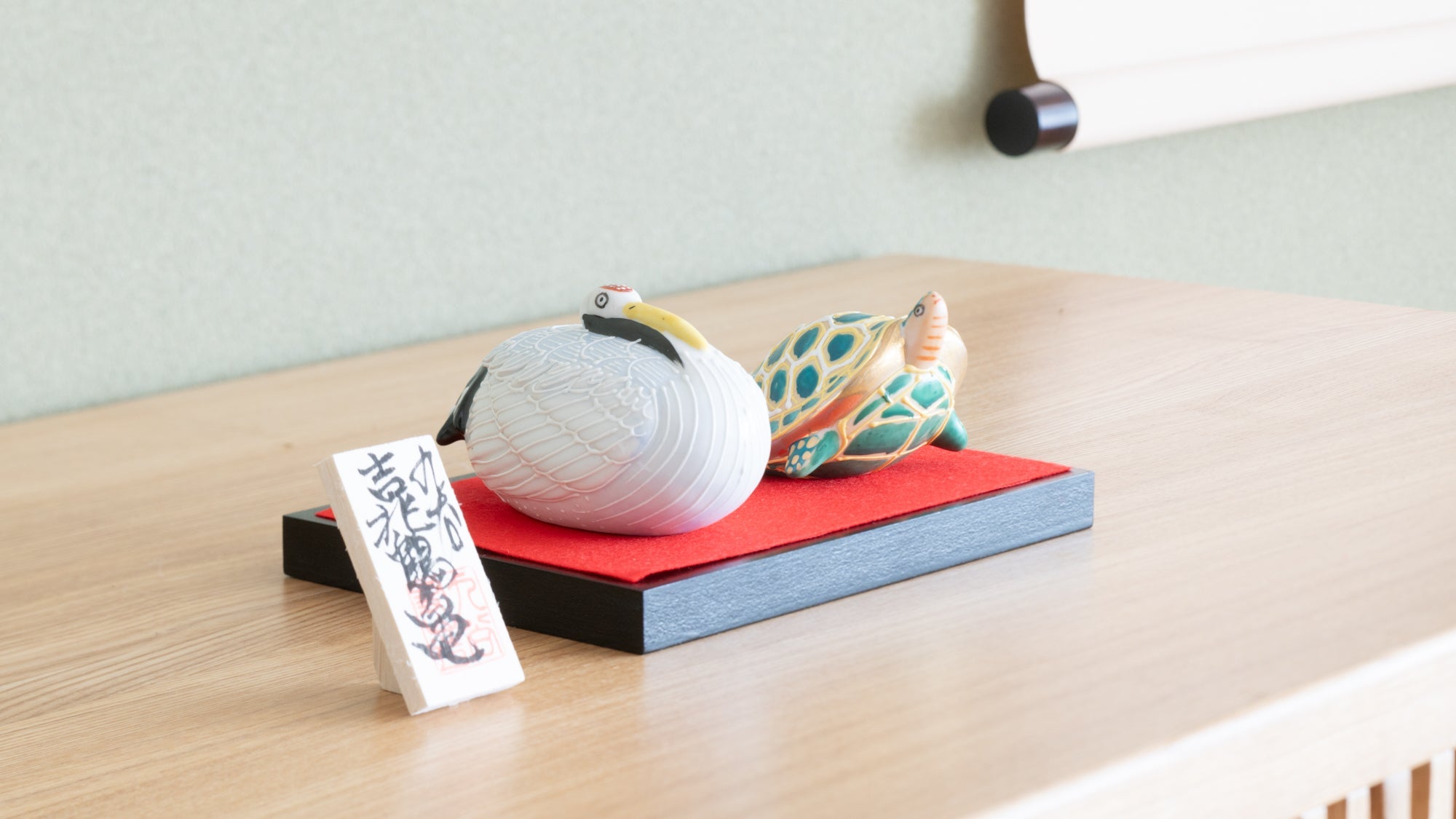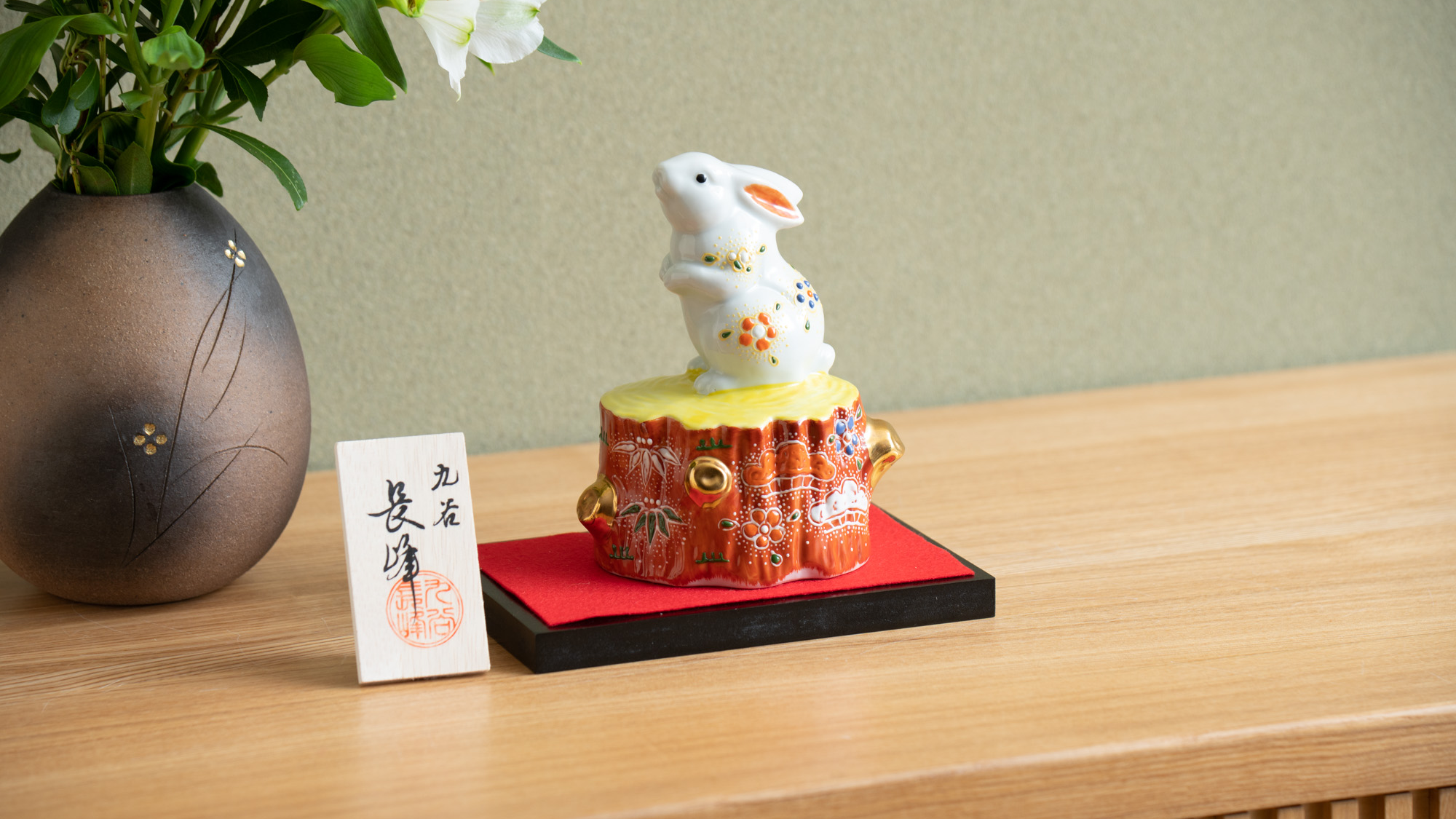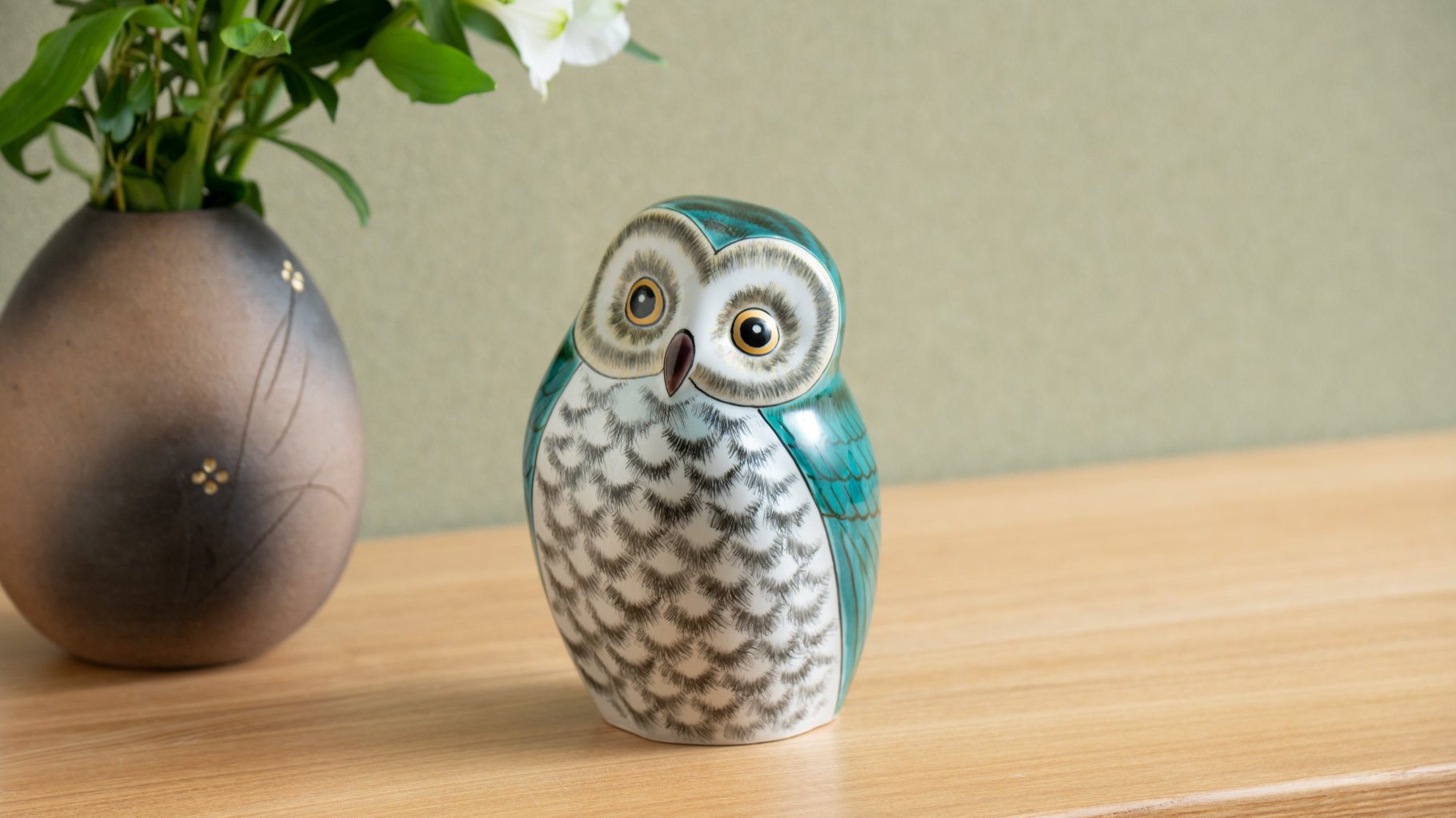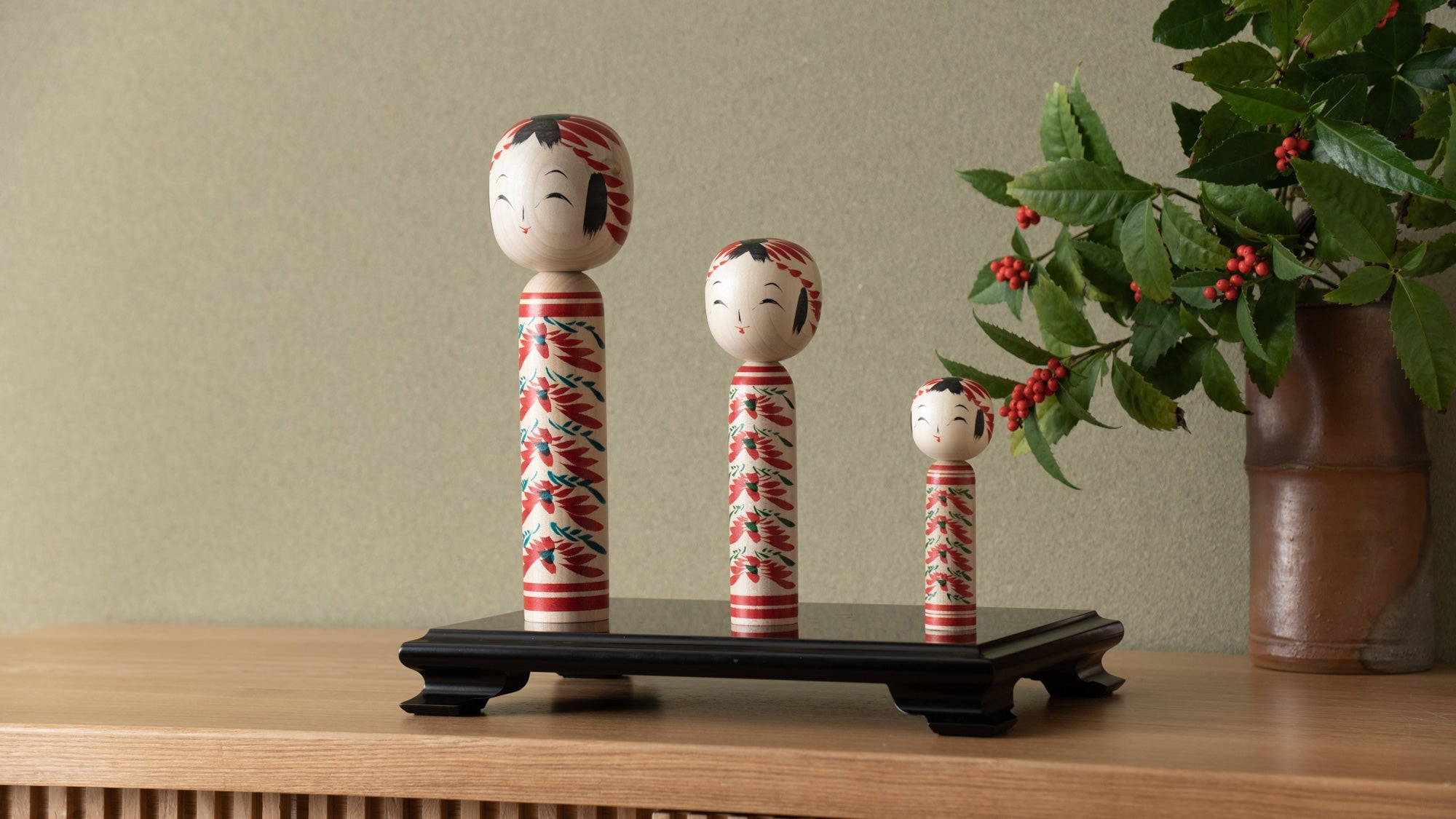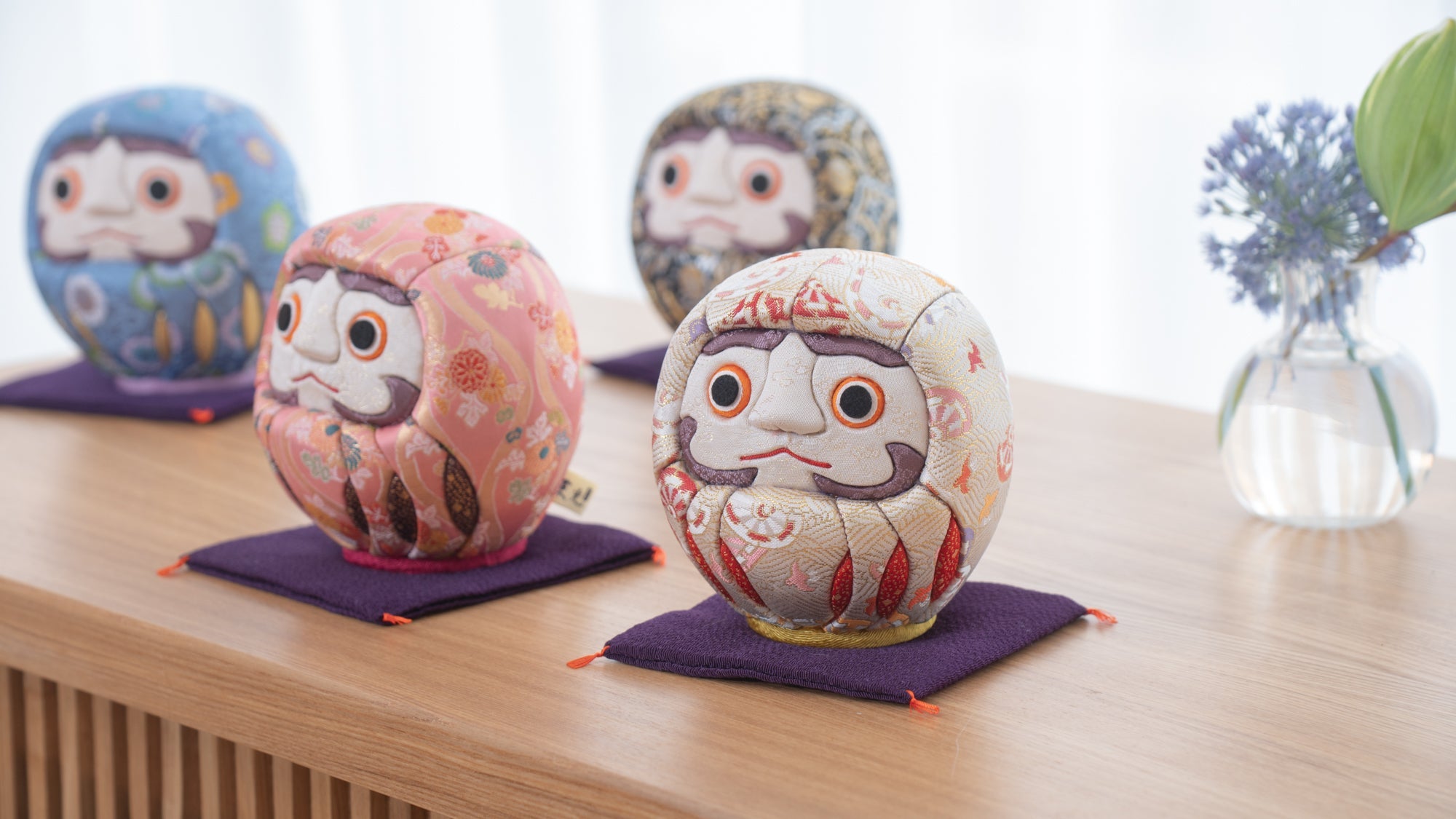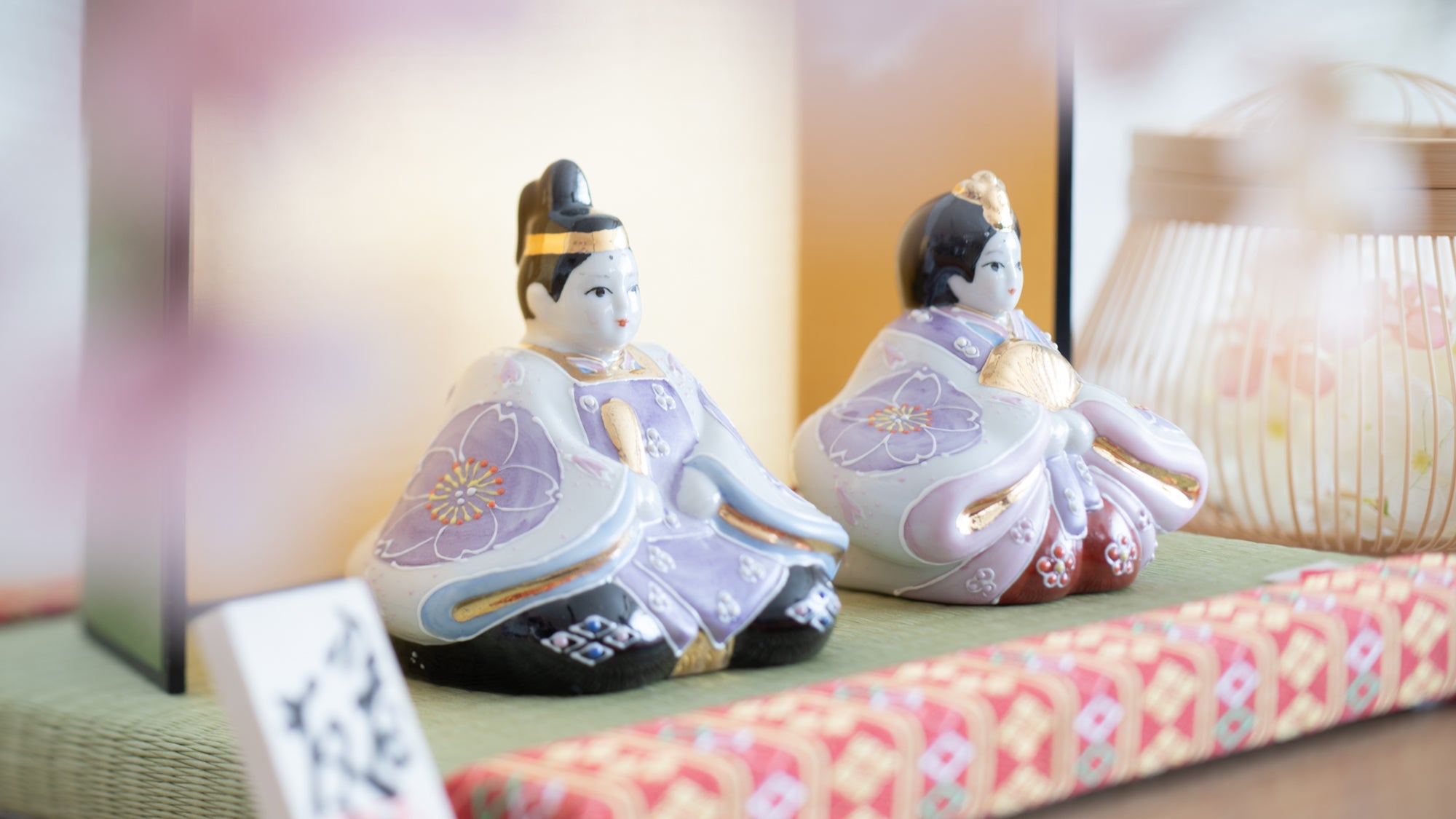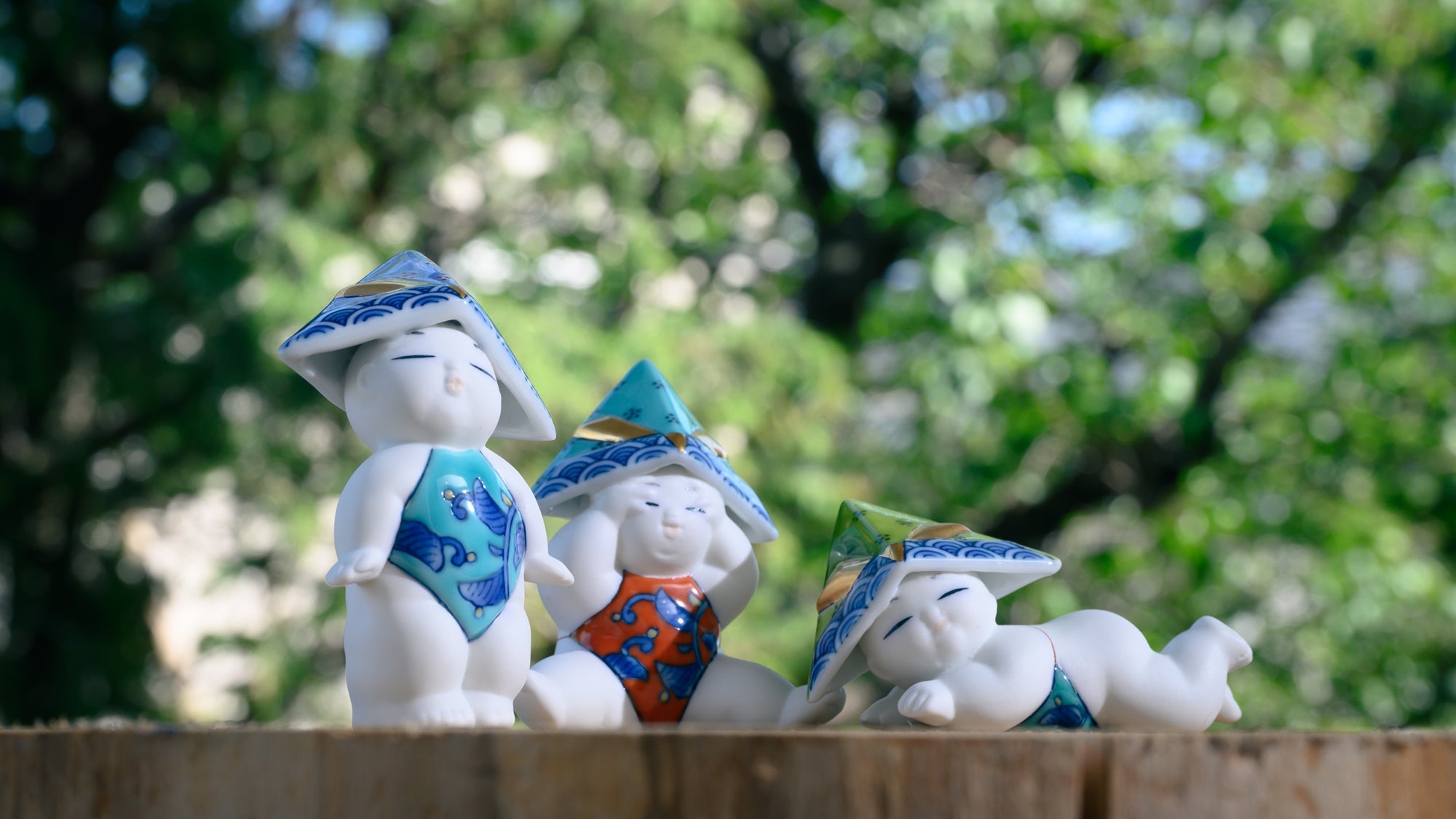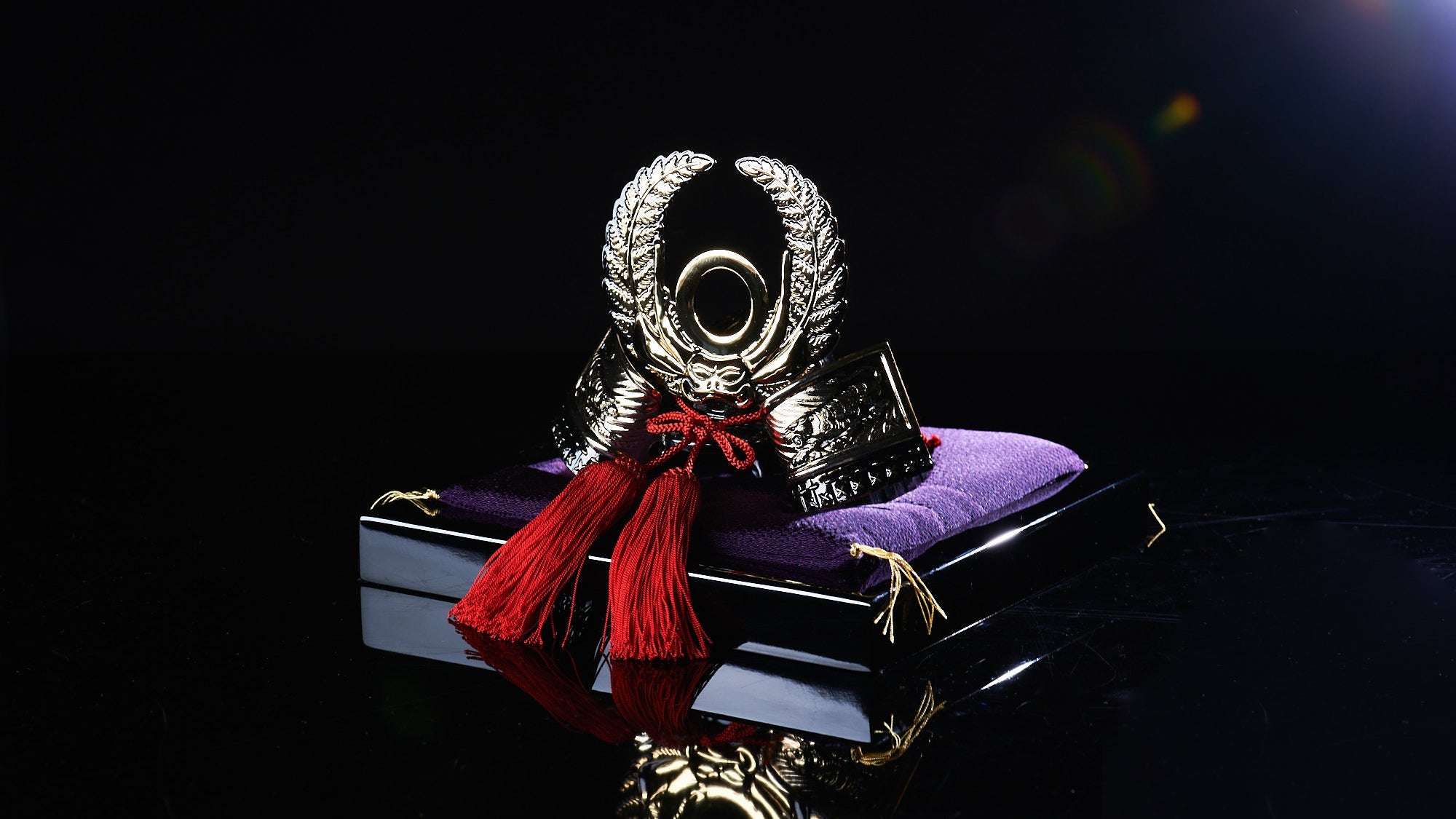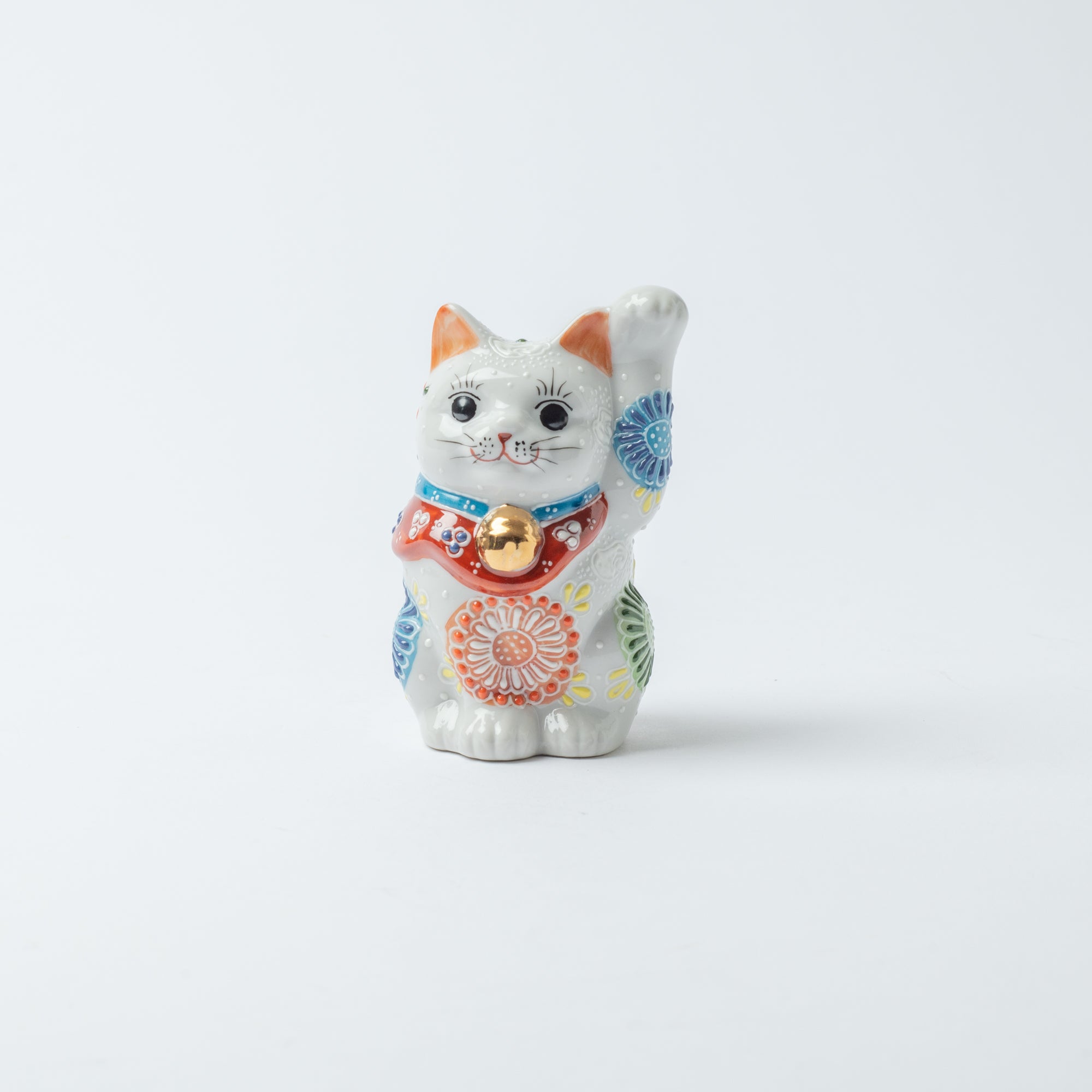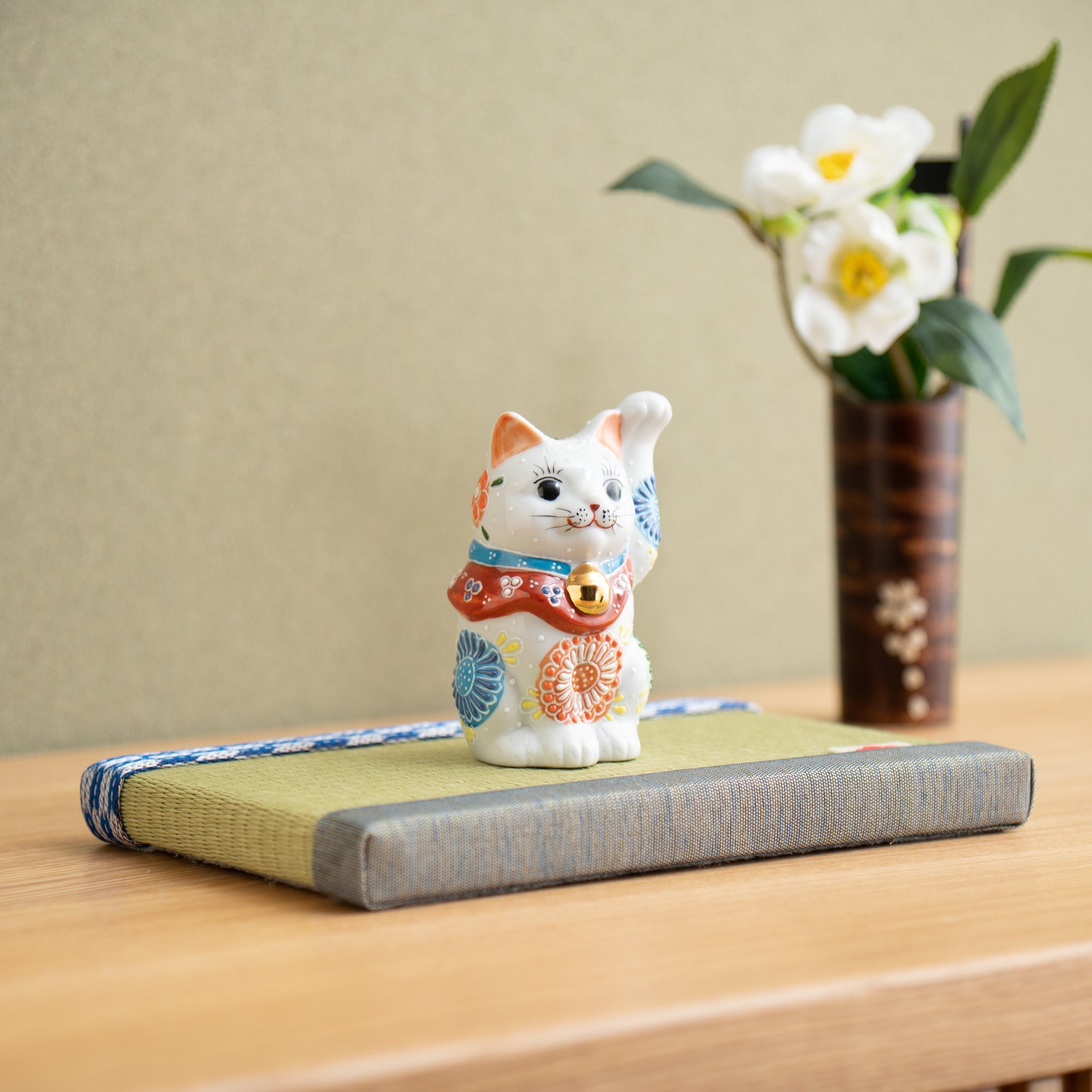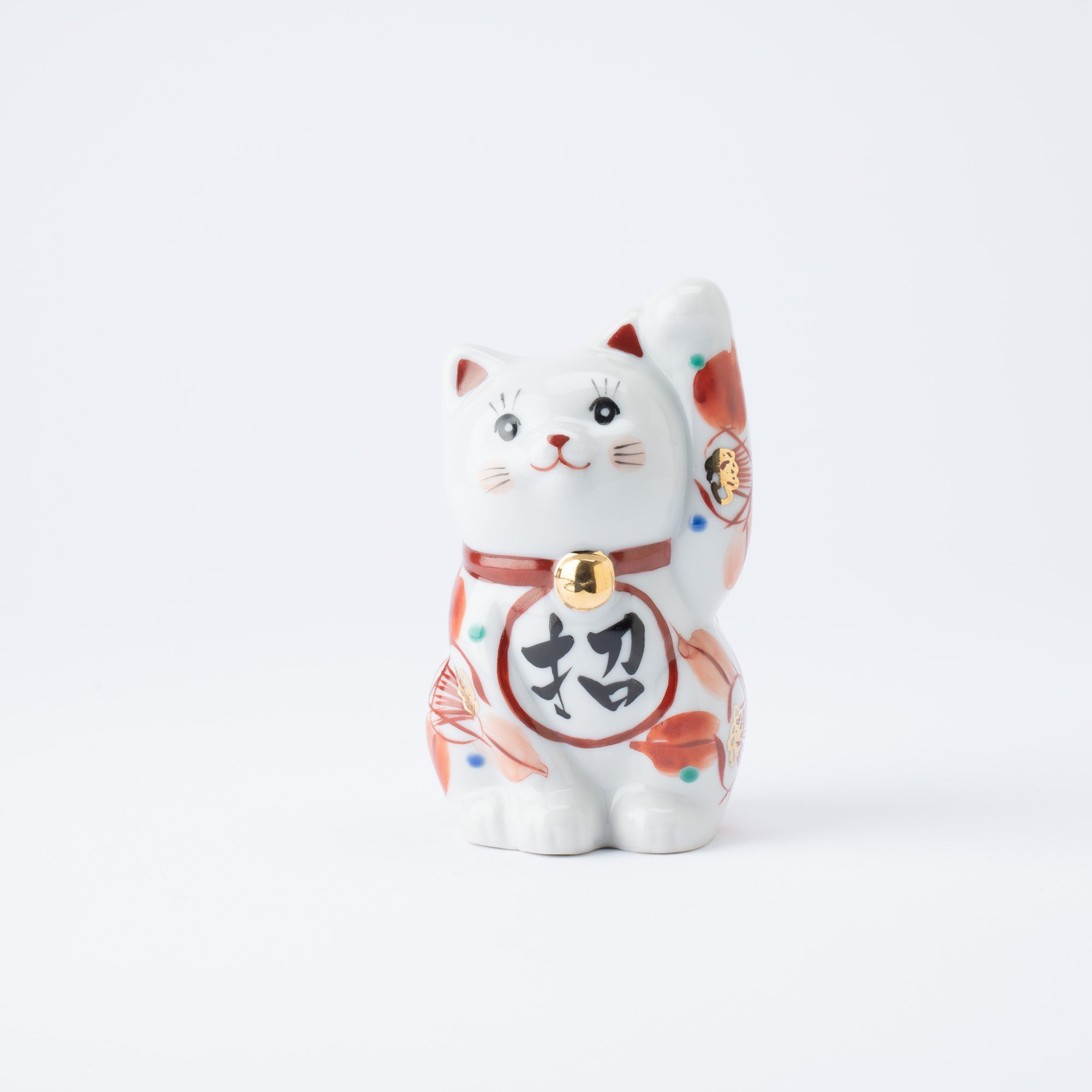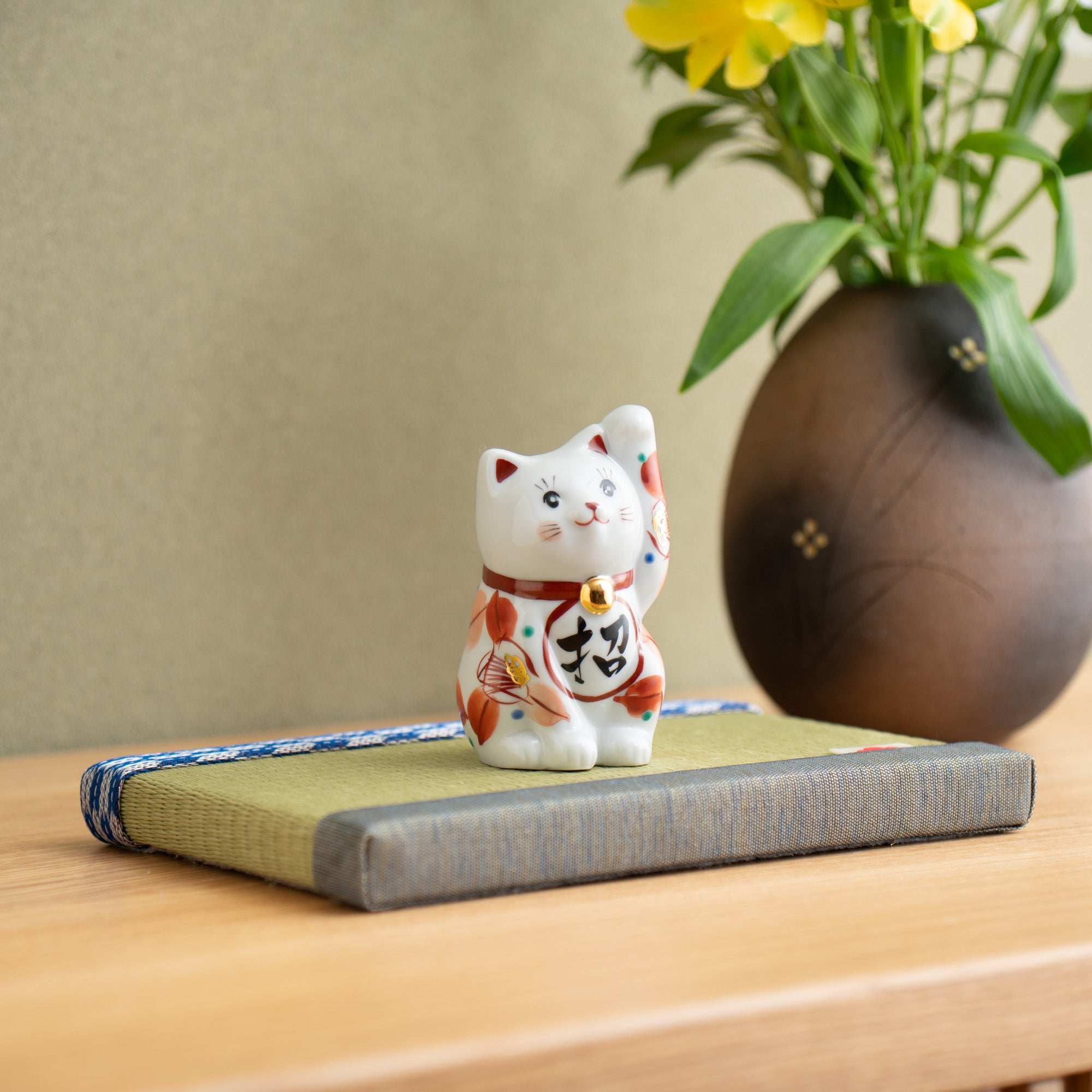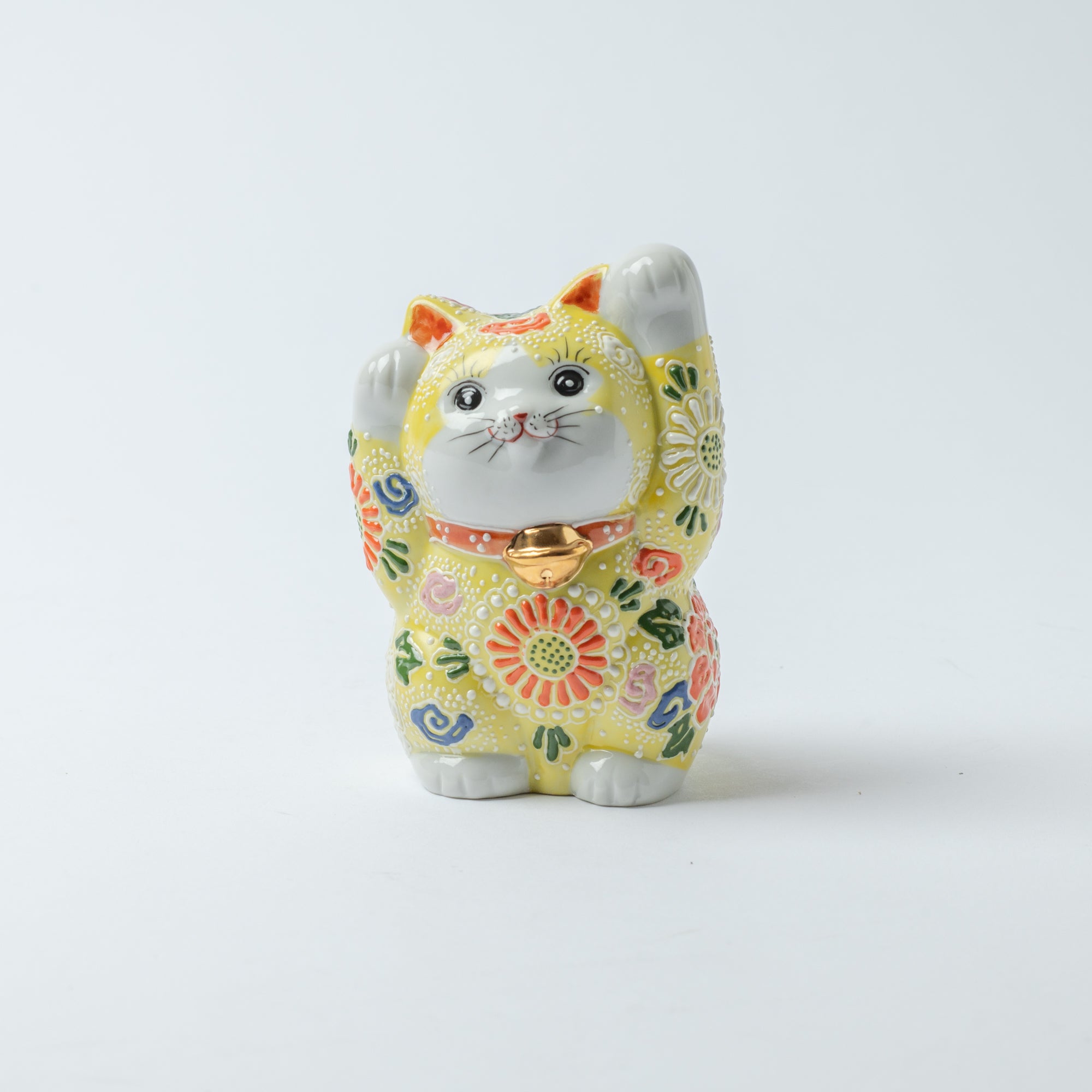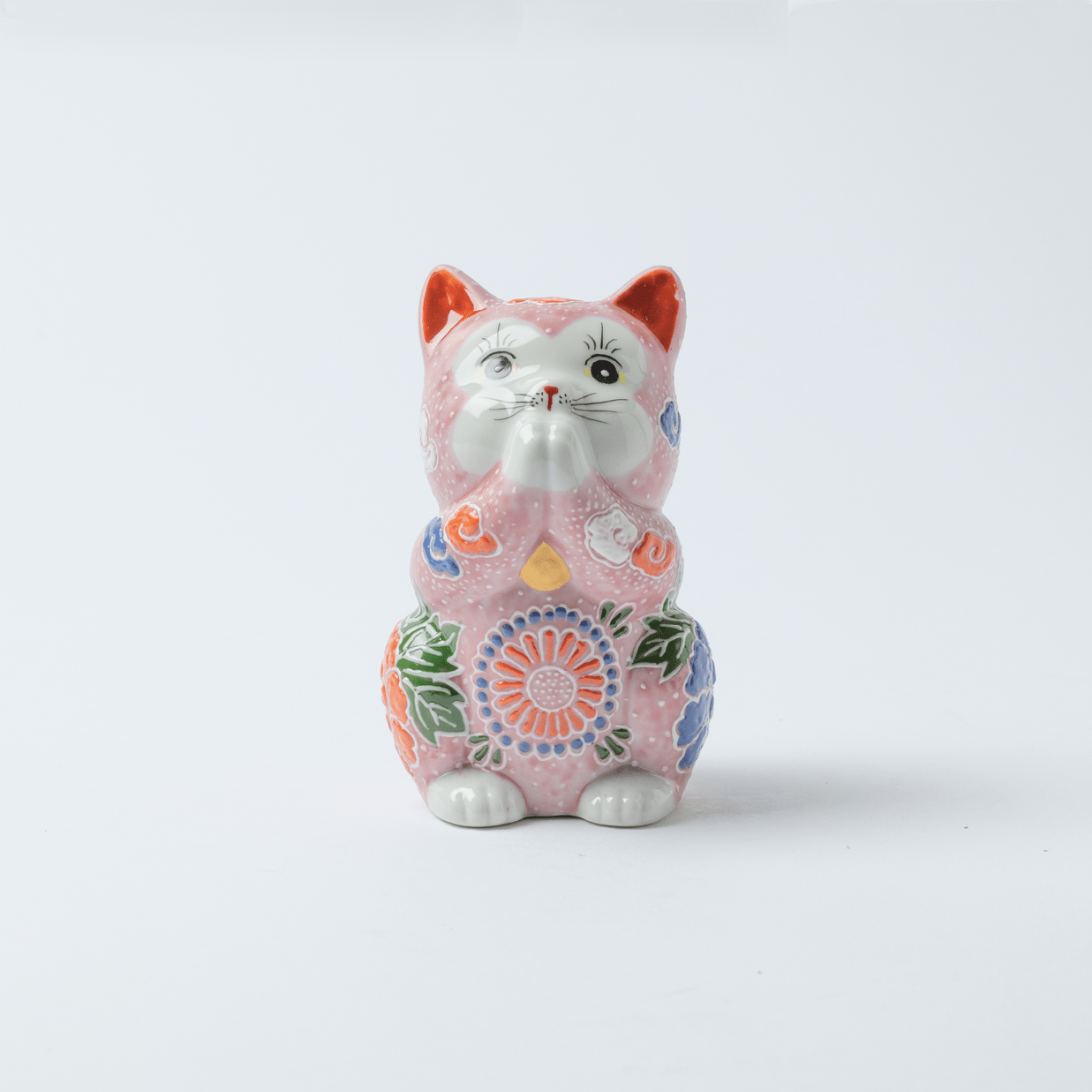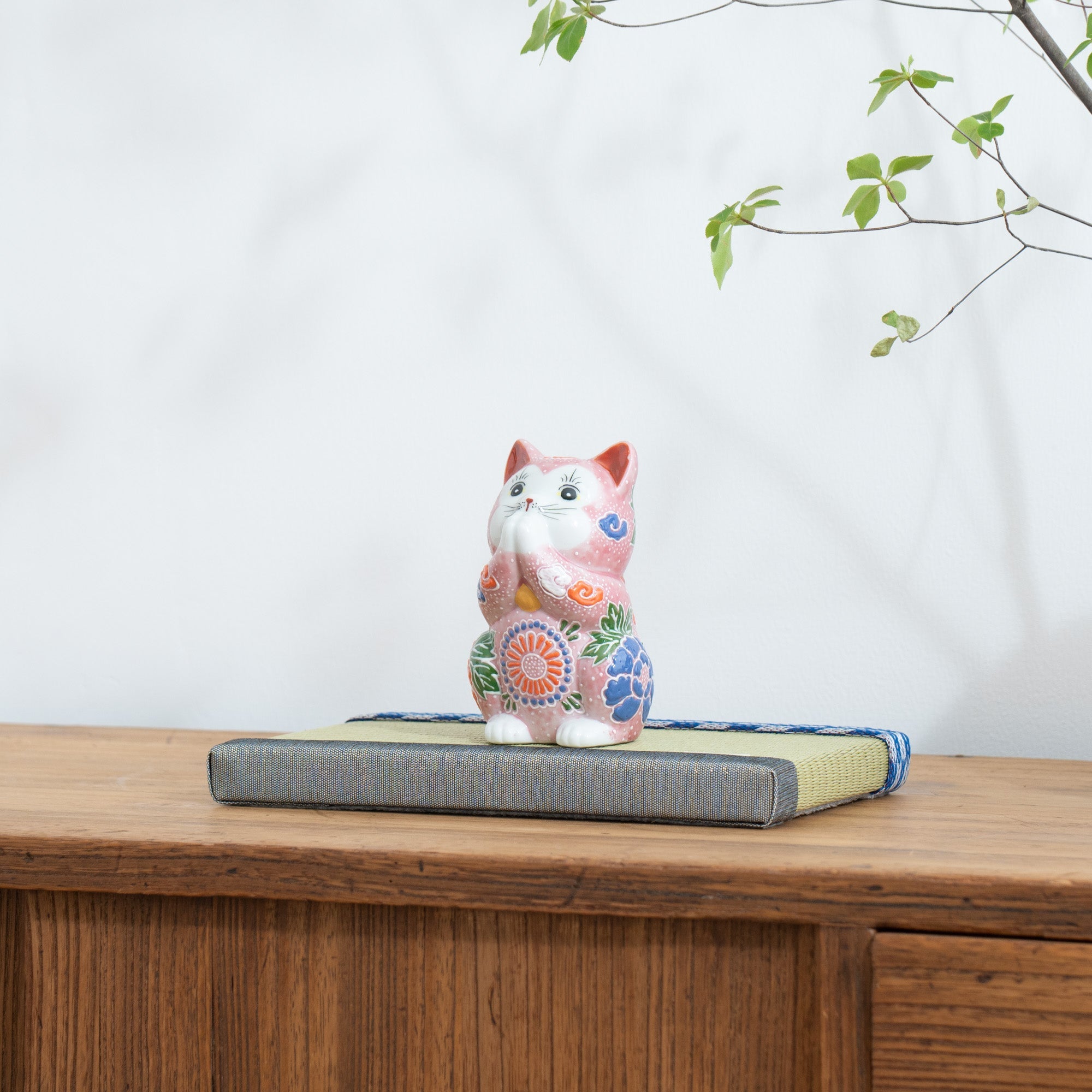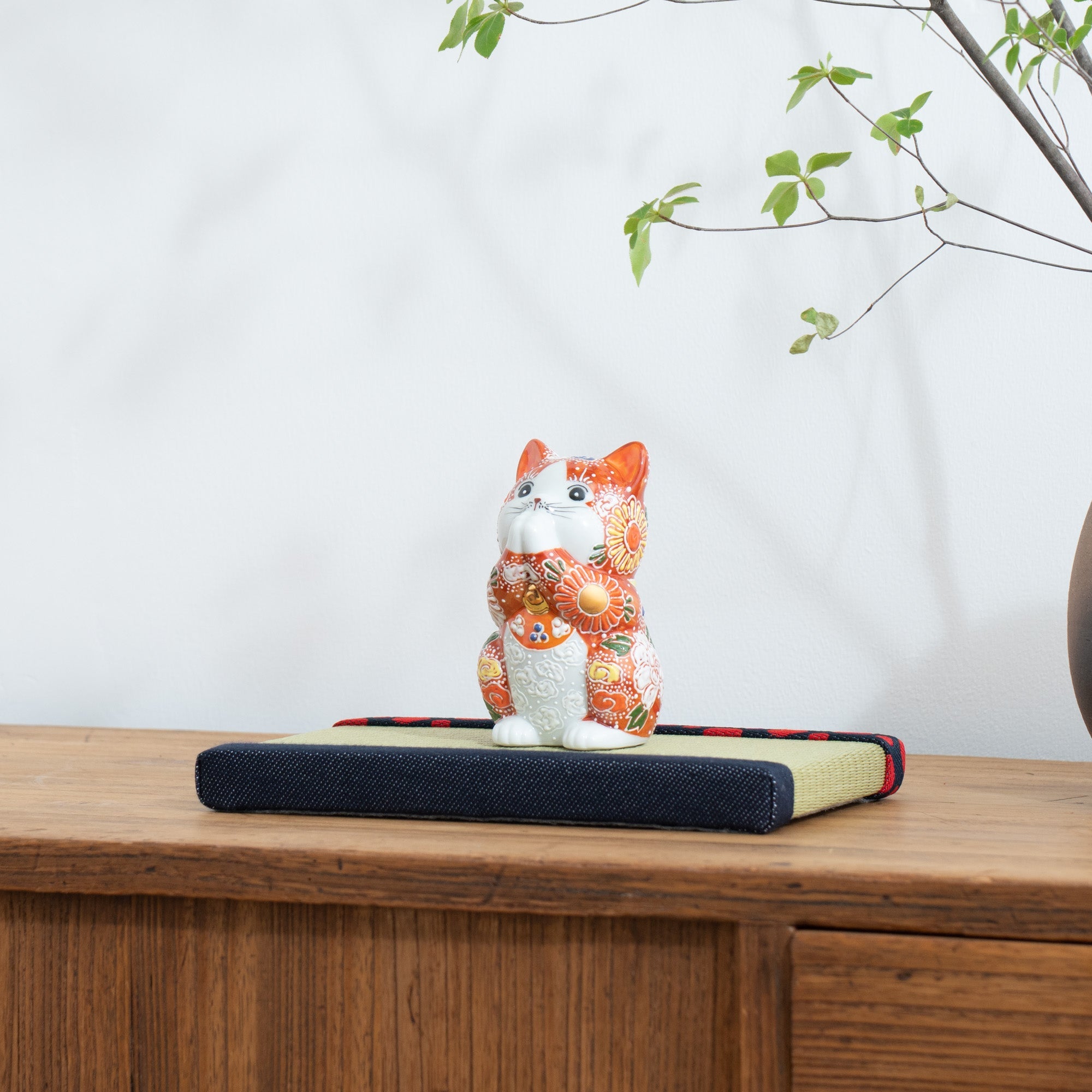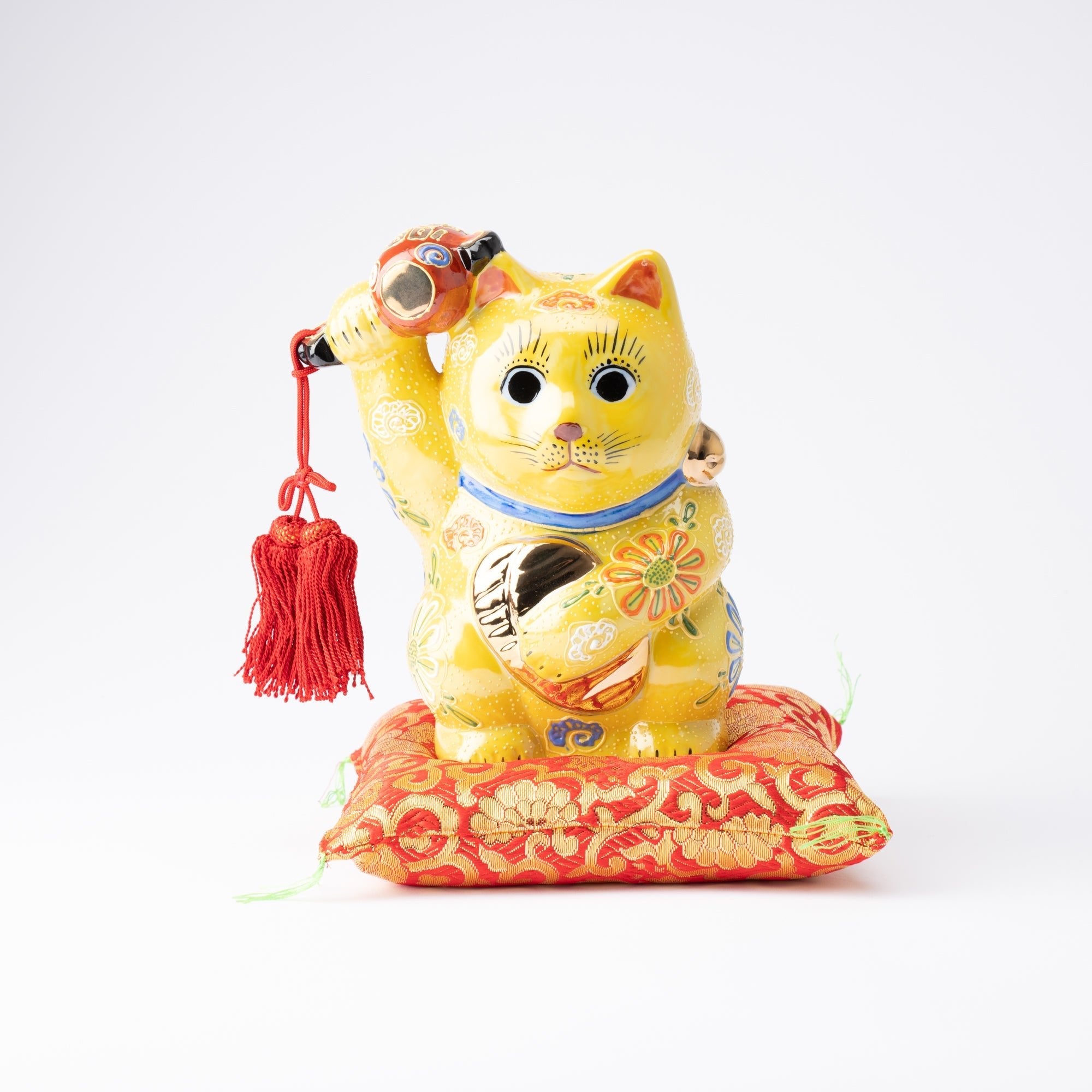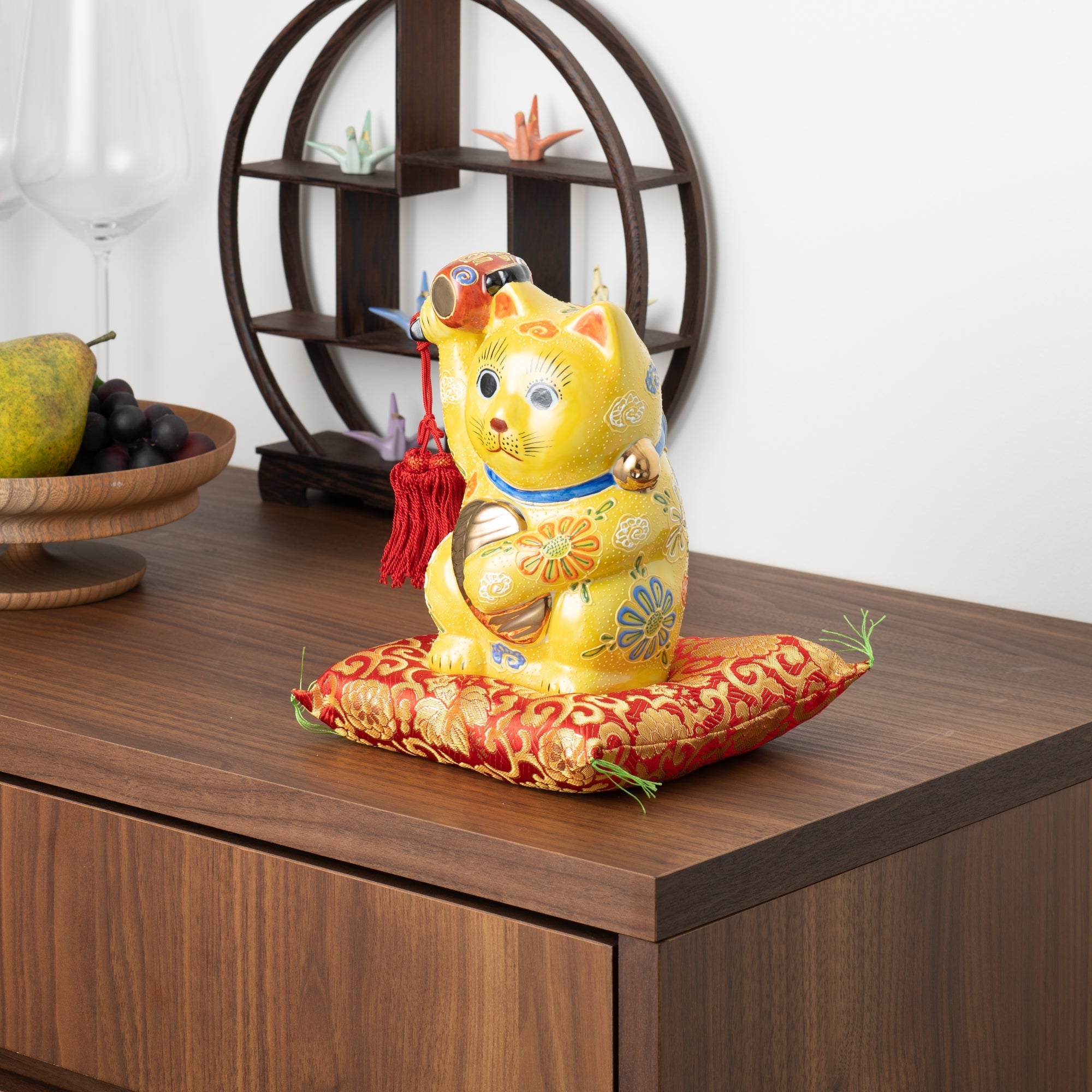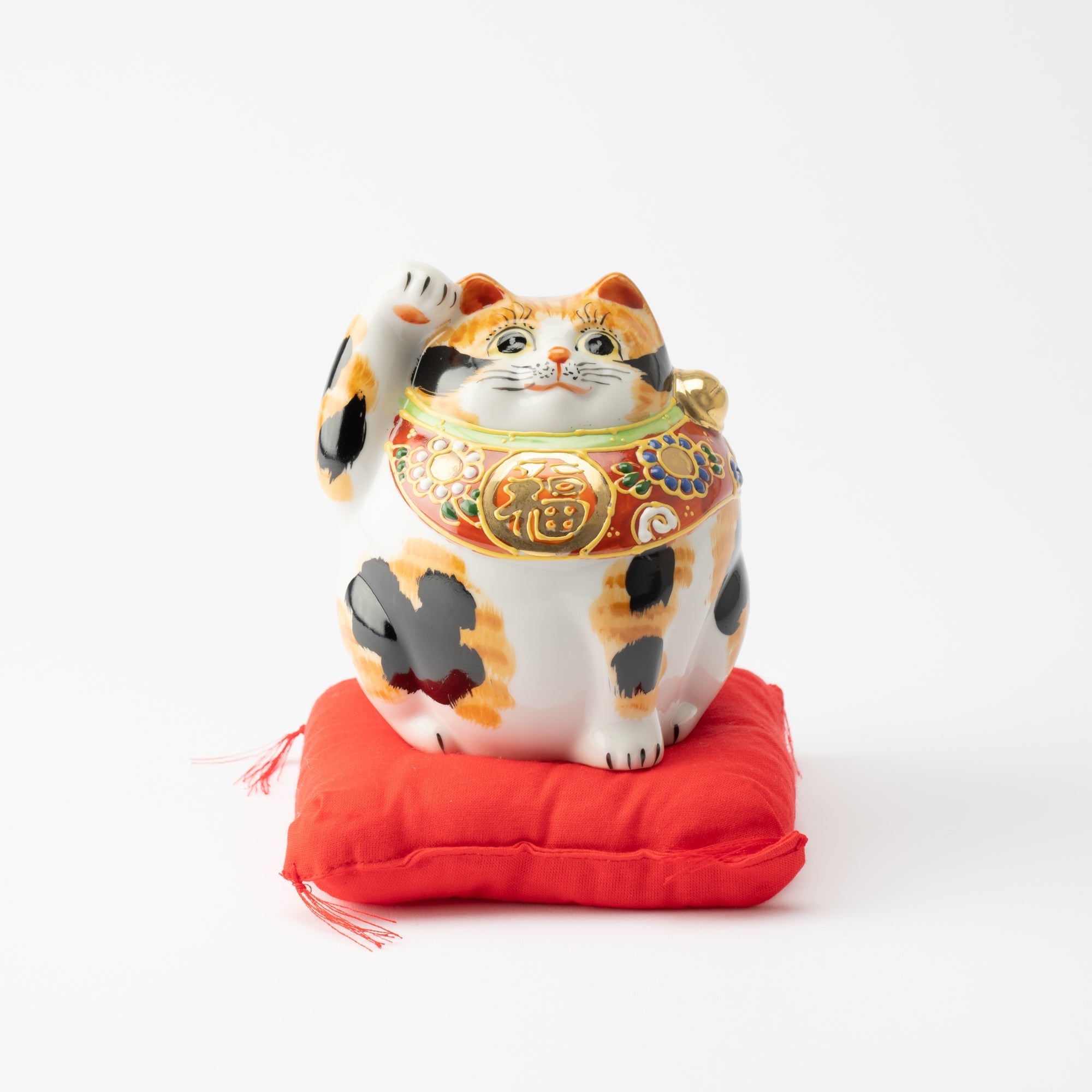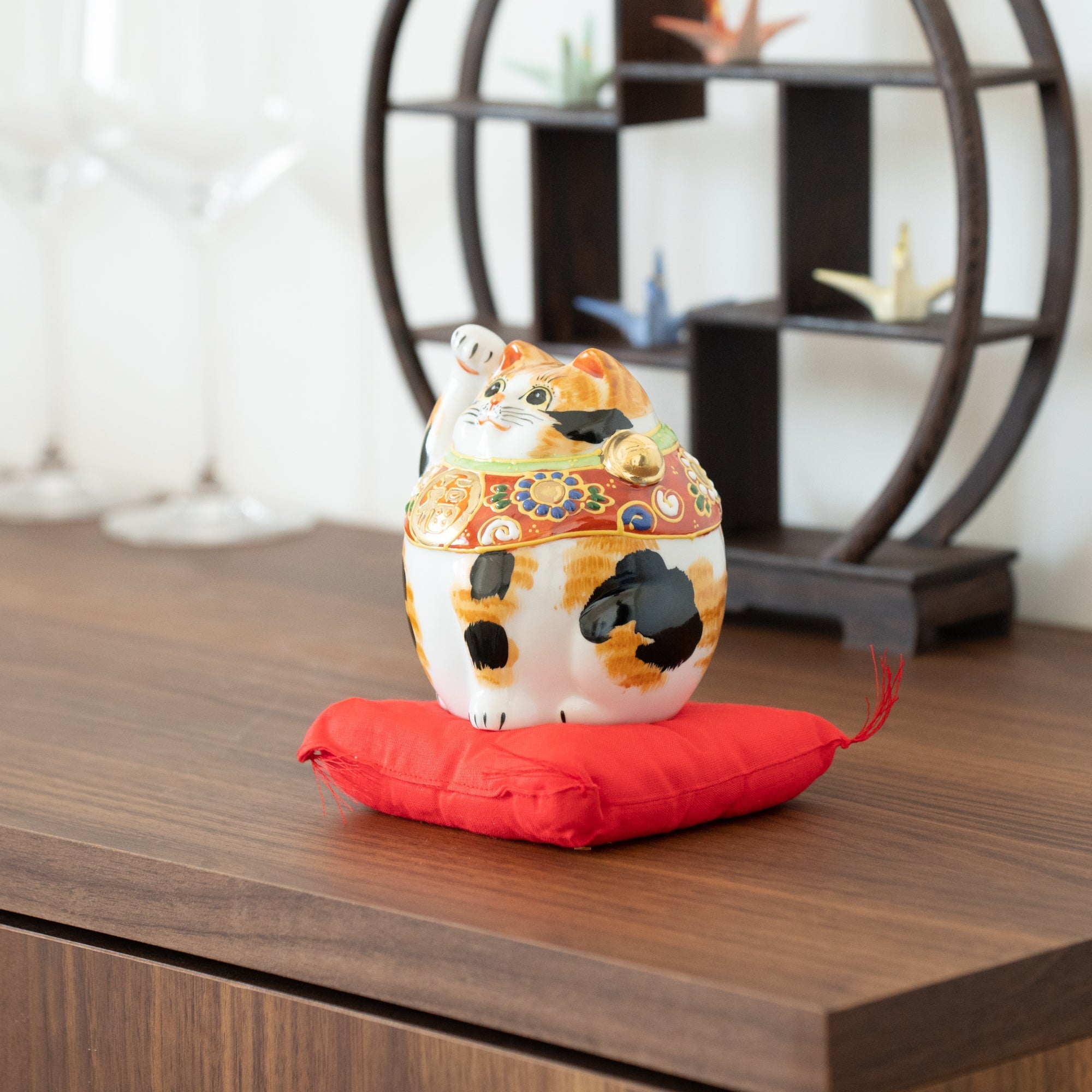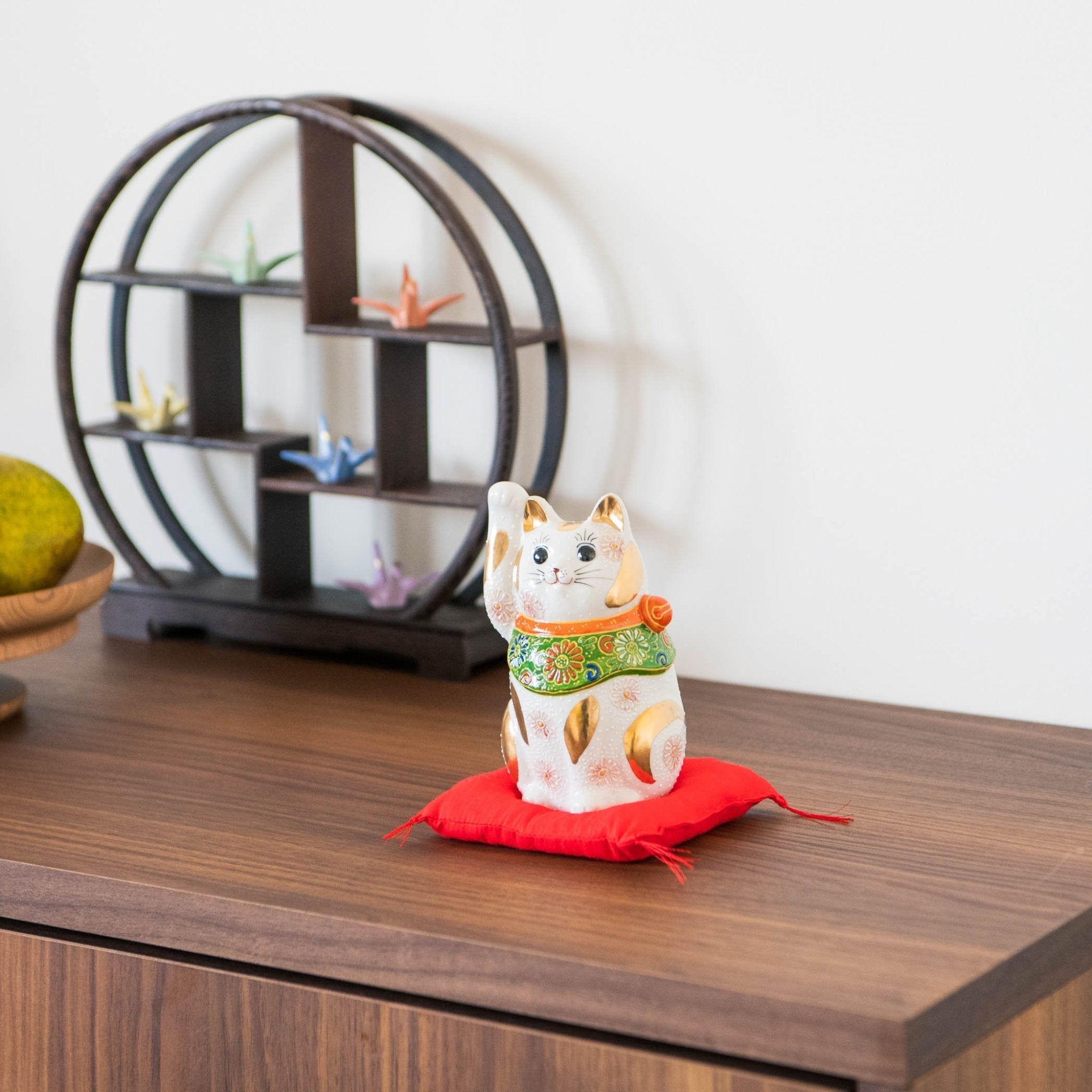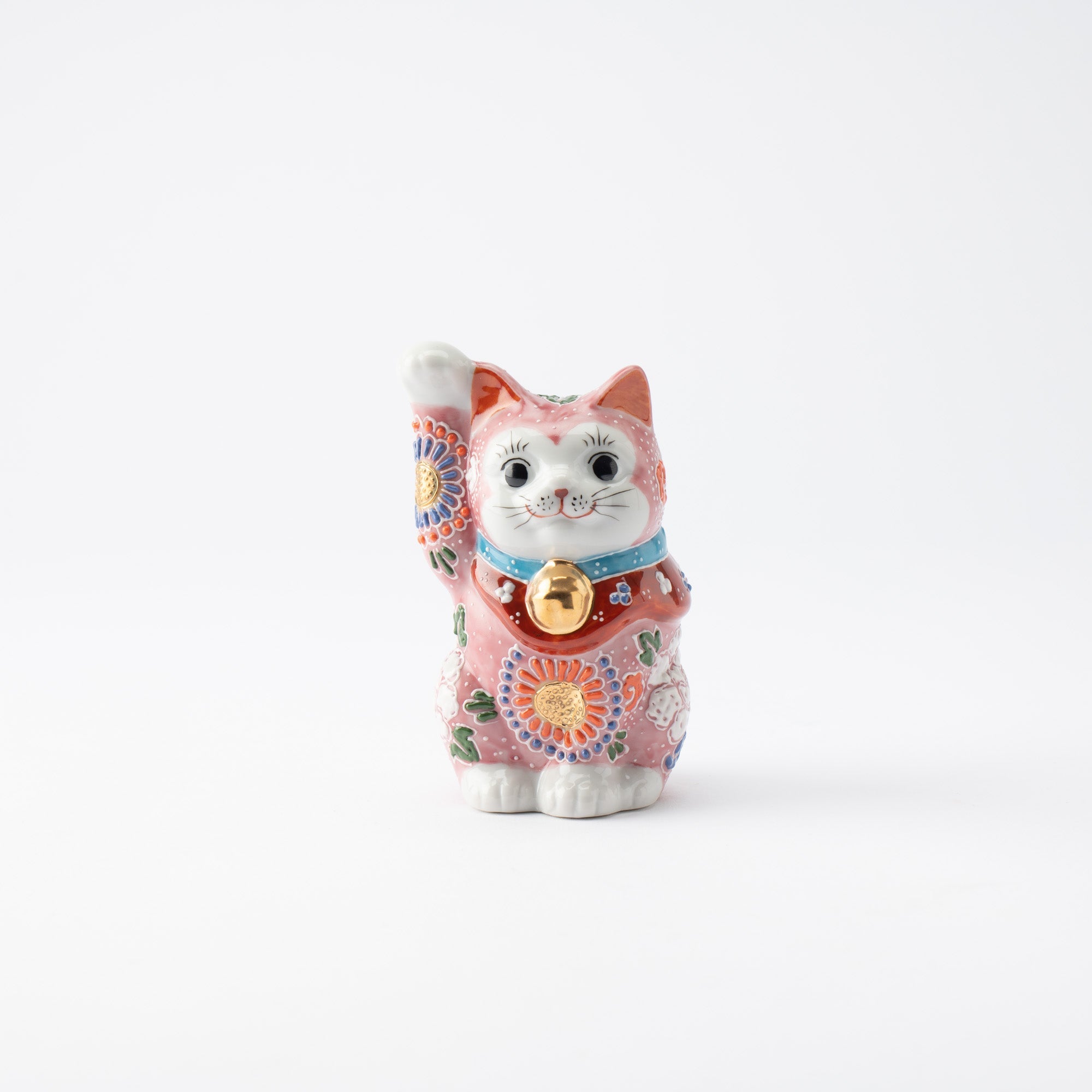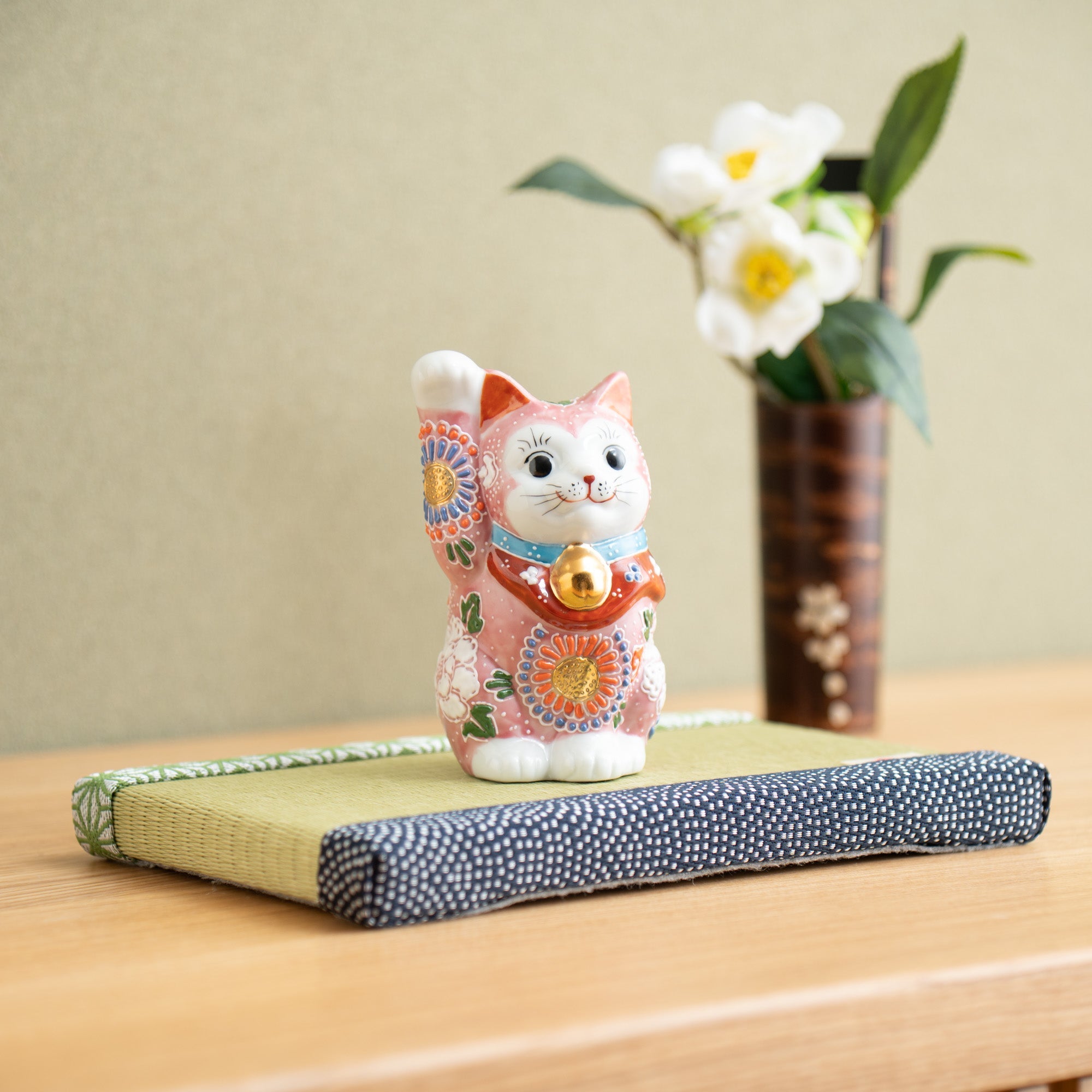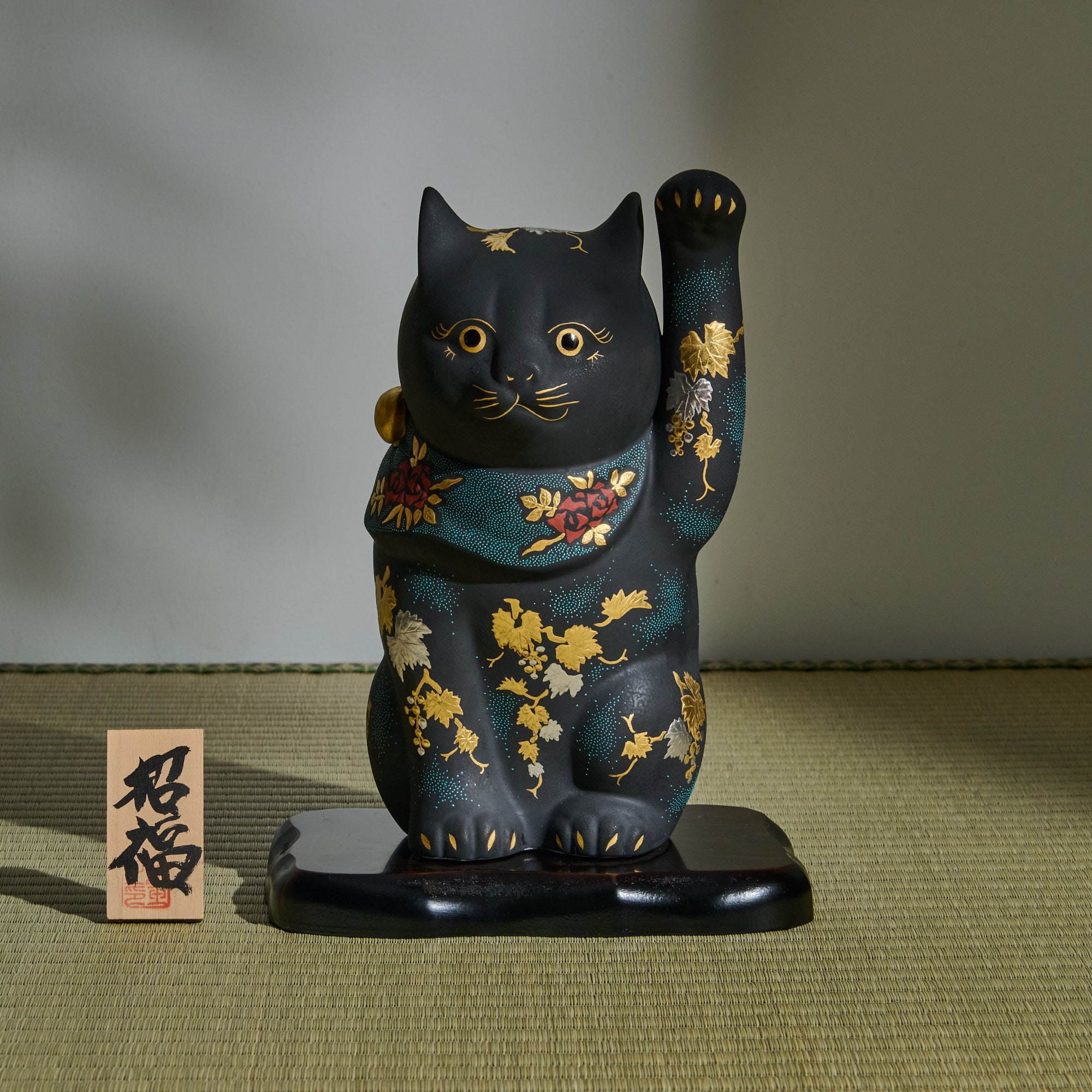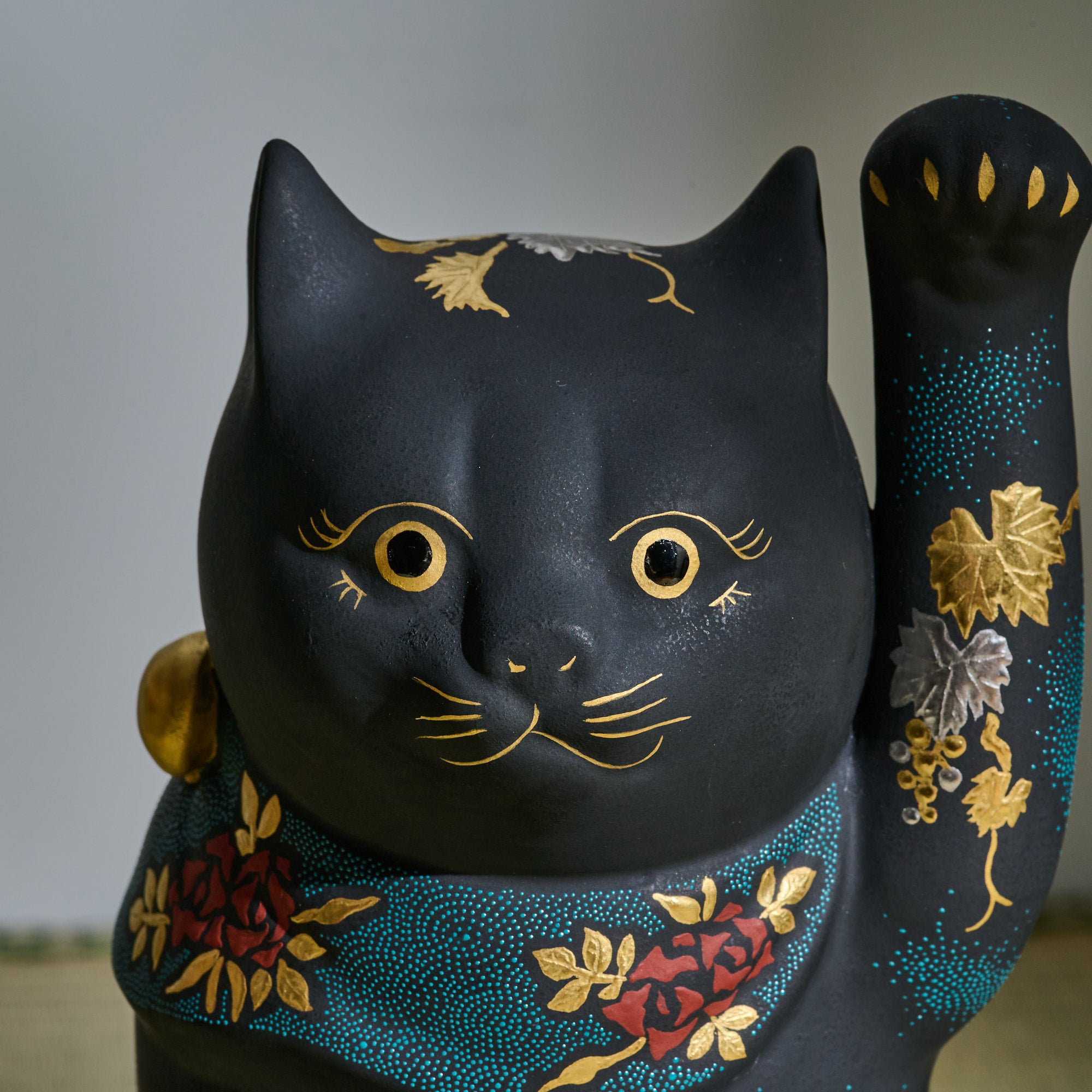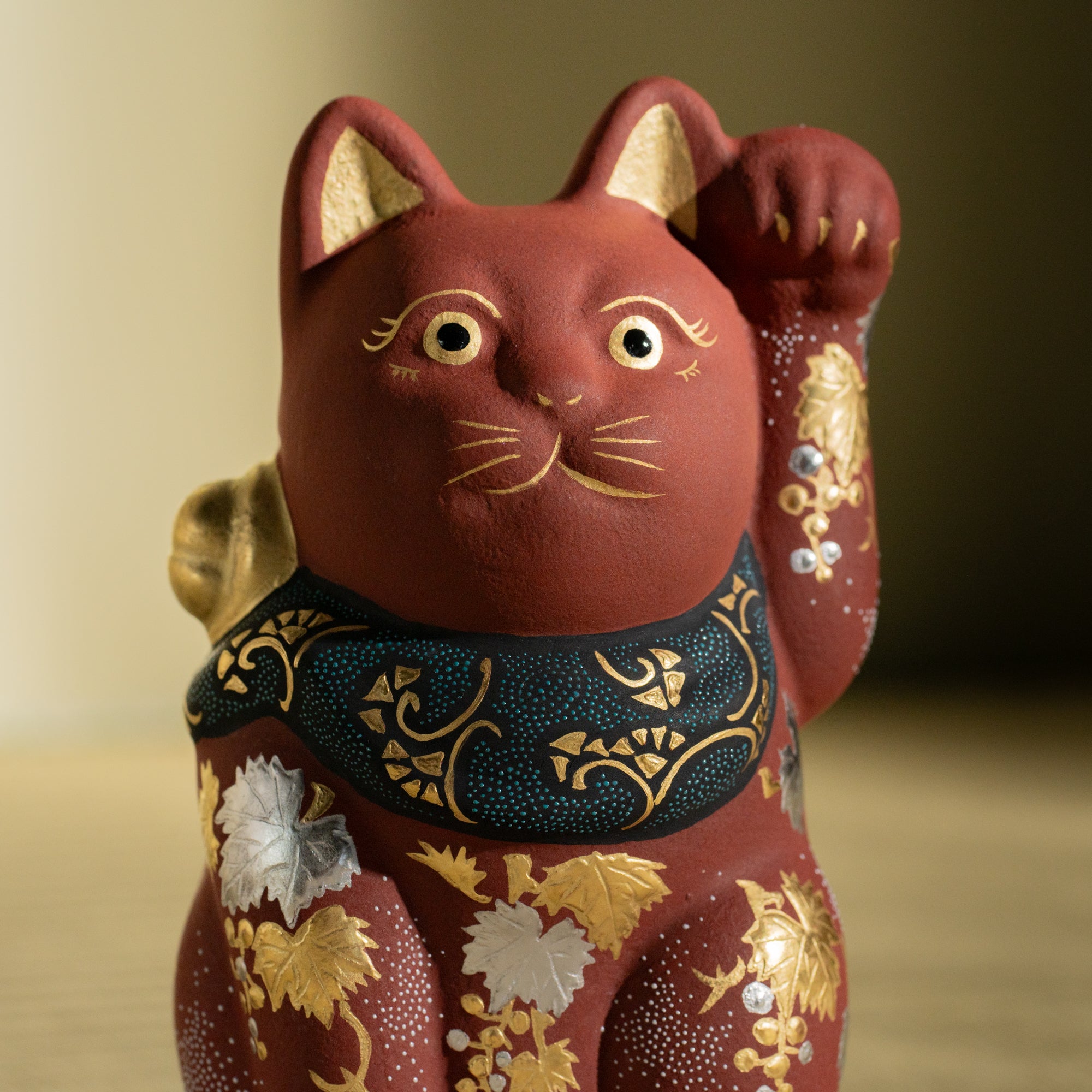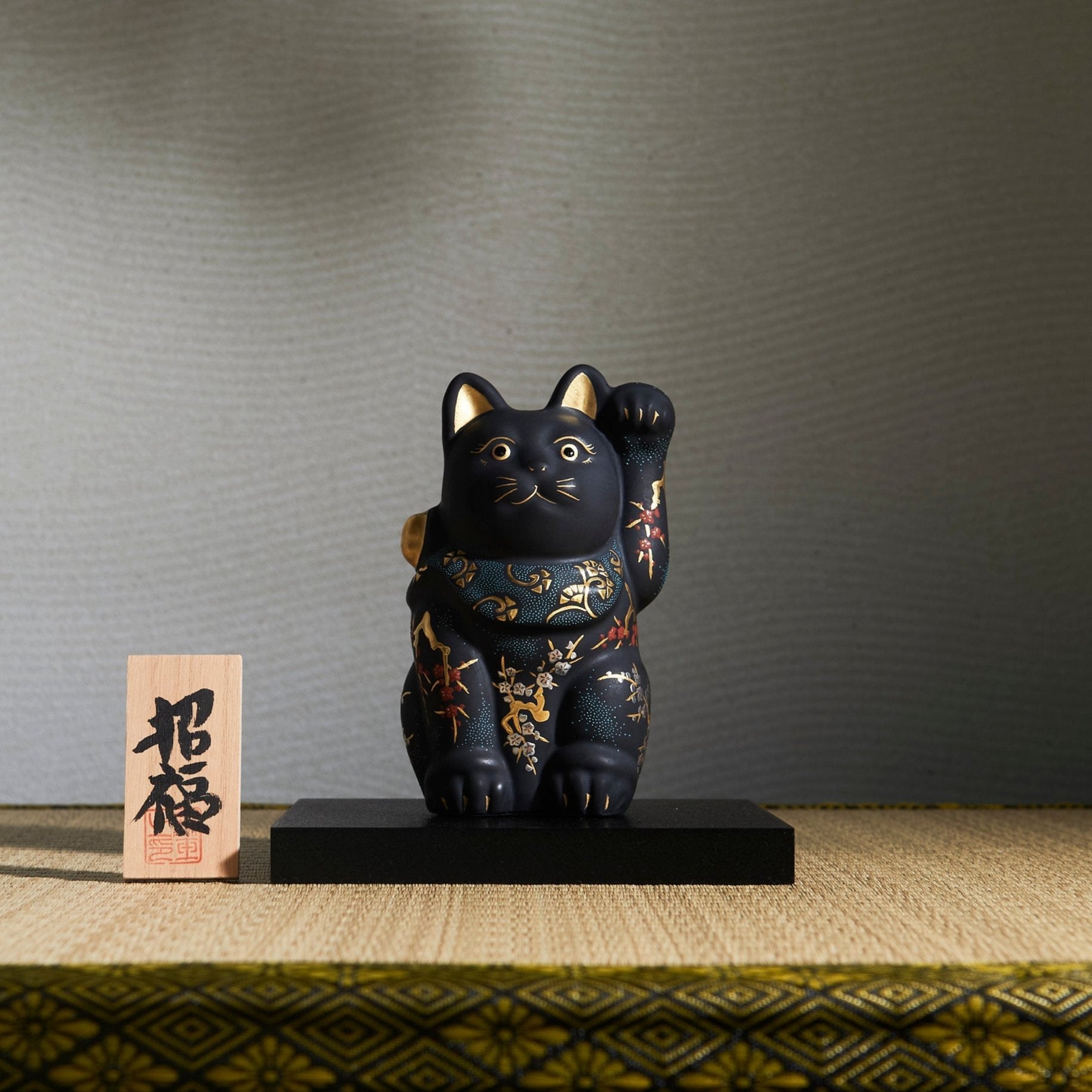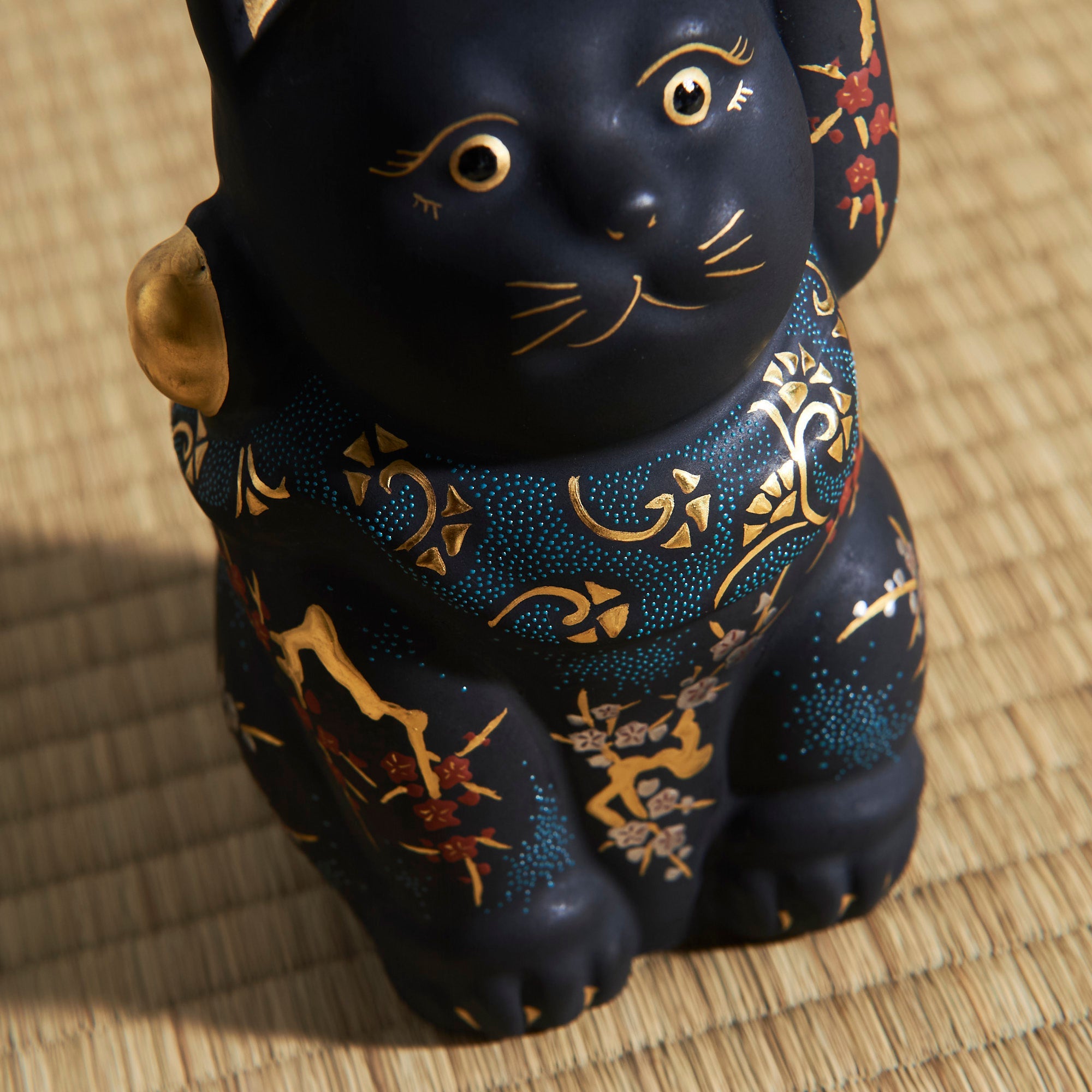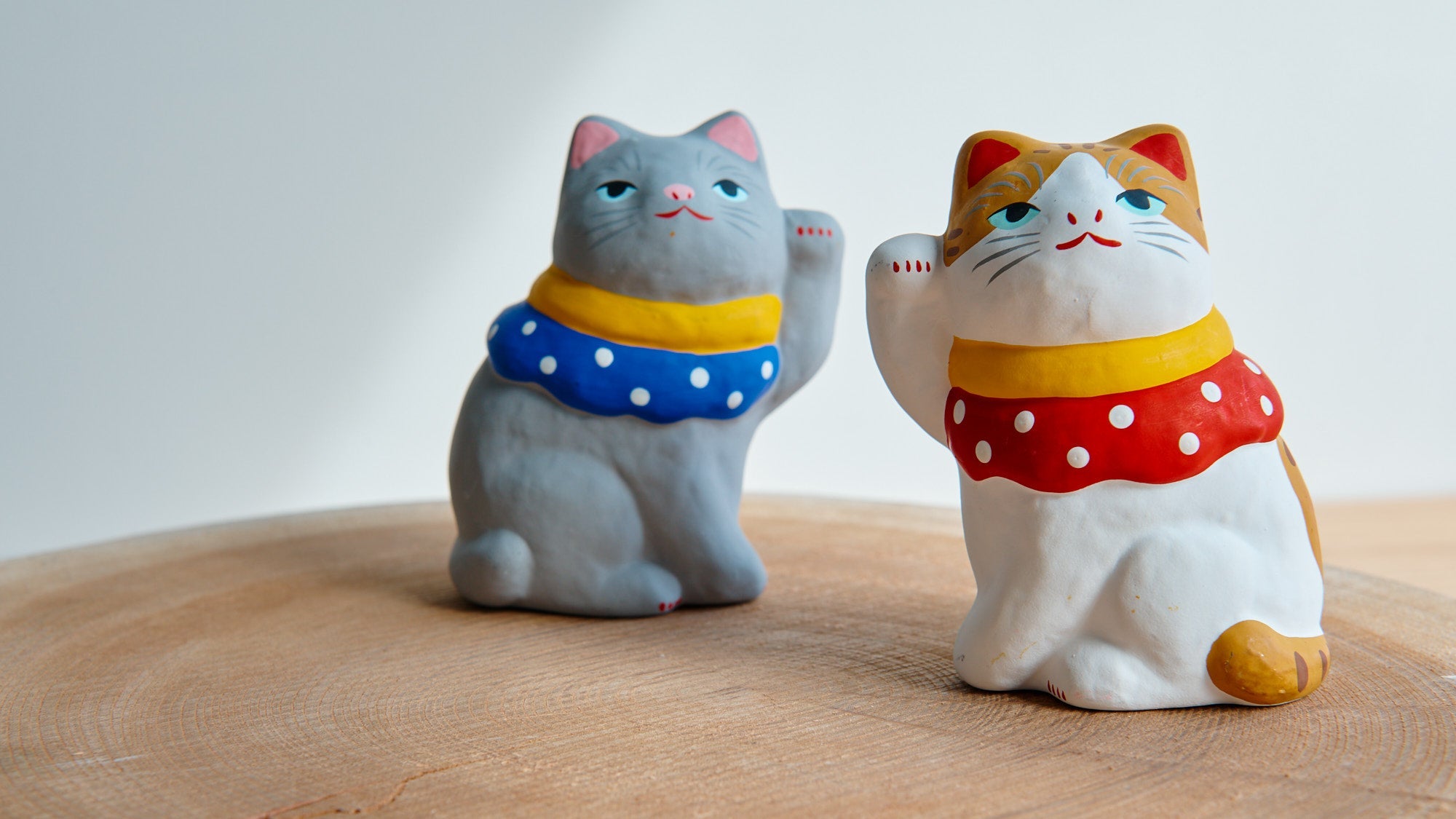
Maneki Neko
Often referred to in English as lucky cats, maneki neko are iconic figurines in Japanese culture. Modeled after several folktales, they are said to beckon luck and, when placed at a storefront, potential customers. View the collection below to find a favorite maneki neko of your own to match your style and uplift your home or business.
What does the pose of the lucky cat mean?
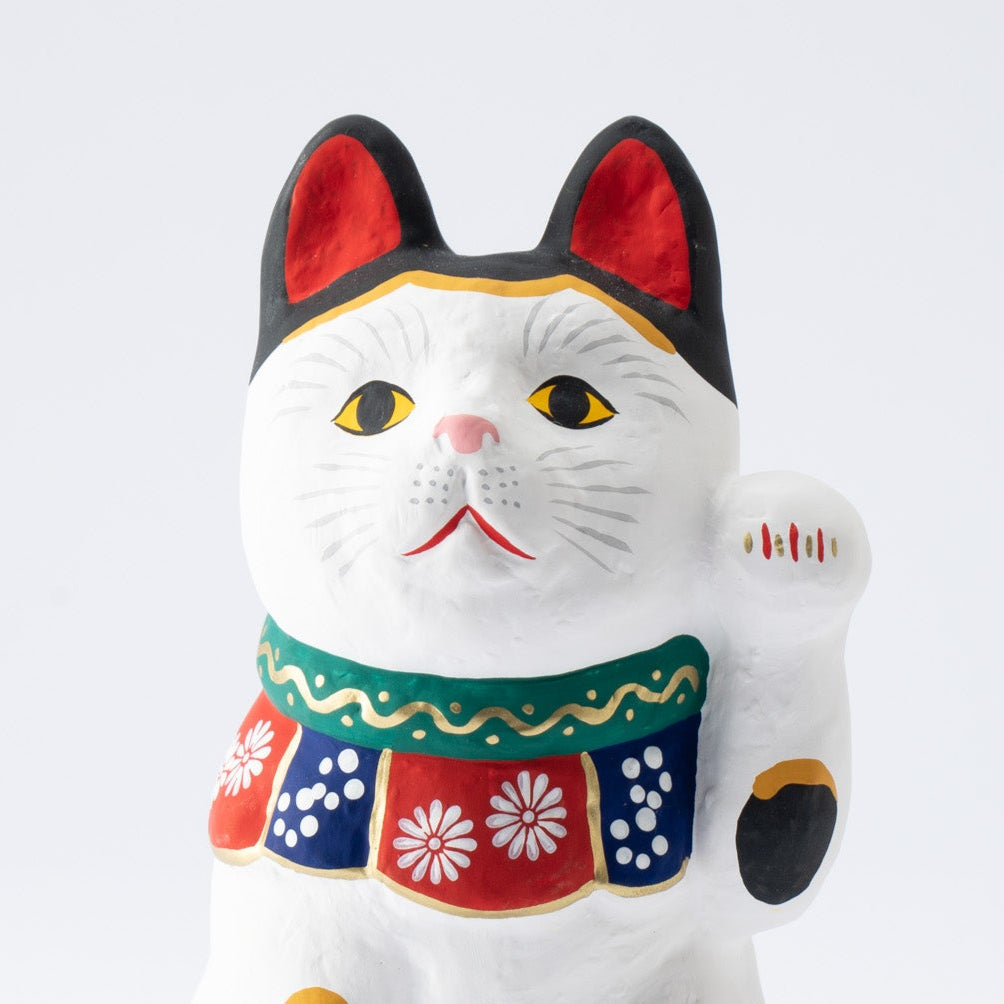
Raised left paw
A lucky cat with its left paw raised is said to be beneficial for inviting people in. When it comes to business, those people are customers, lending this pose its association with business prosperity. These maneki neko are perfect for putting on display in your store or office.
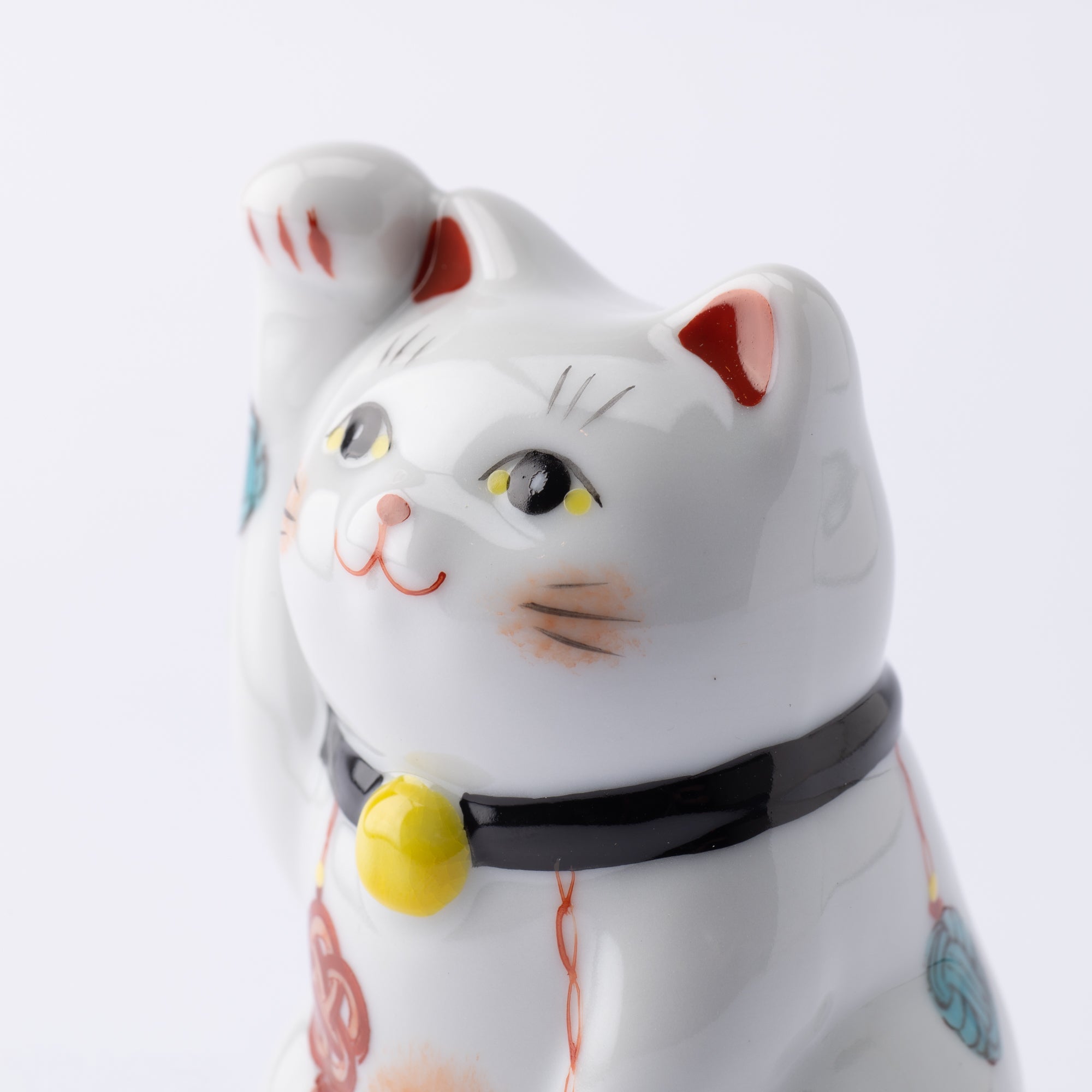
Raised right paw
Lucky cats placed in homes usually have their right paw raised. This type of lucky cat is said to bring prosperity or good fortune to its owner. It is also often seen near the cash register or main entrance of shops in Japan.
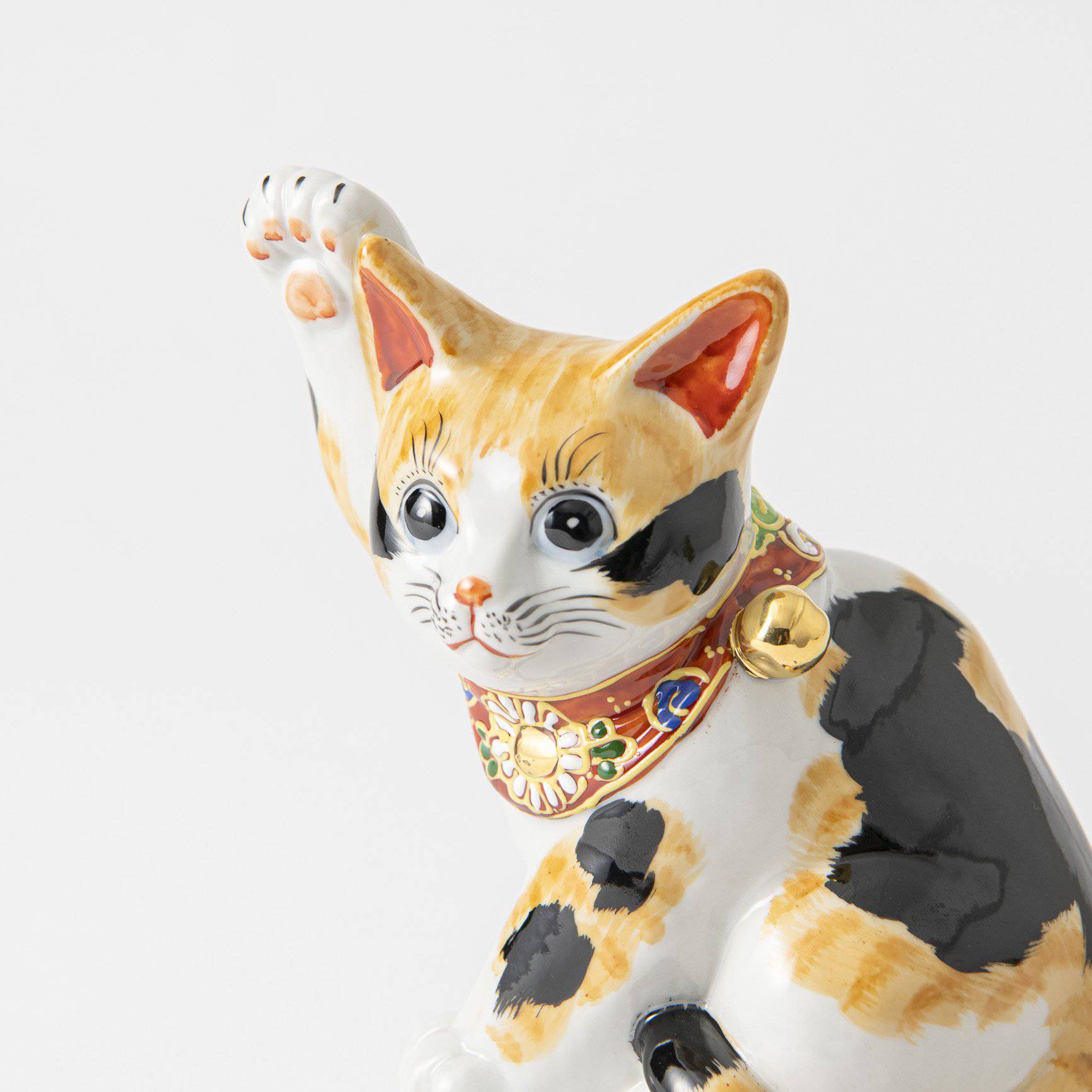
Paw Raised High
A maneki neko with a leg stretched out long, its paw held high, has significant design symbolism. This variety of lucky cat is said to bring good fortune that stretches far into the future.
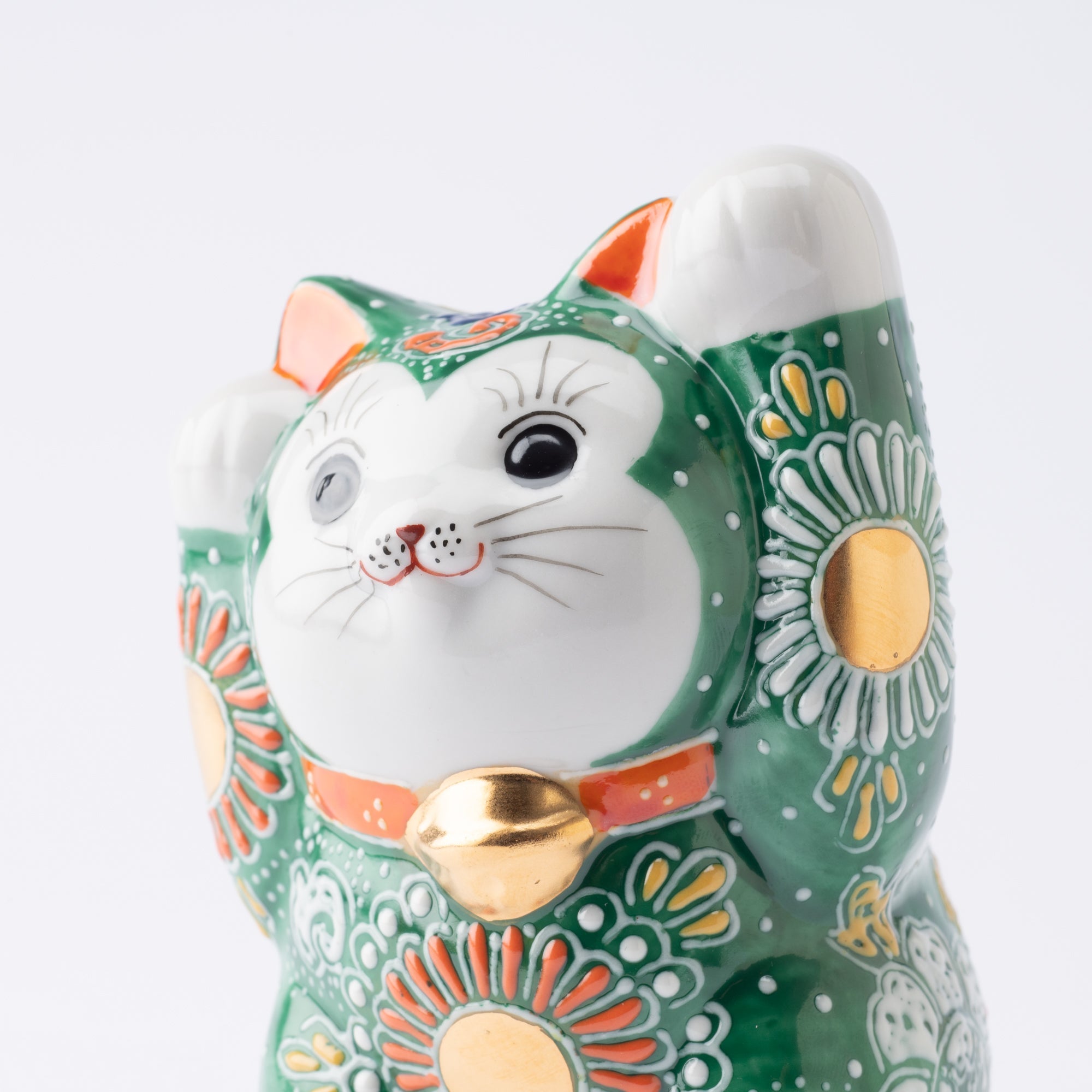
Both Paws Raised
A lucky cat with both paws raised brings its owner the combined effect of left and right paws: both people and good luck. This type of lucky cat is believed to bring more fortune and longer life.
Related posts
Filters


